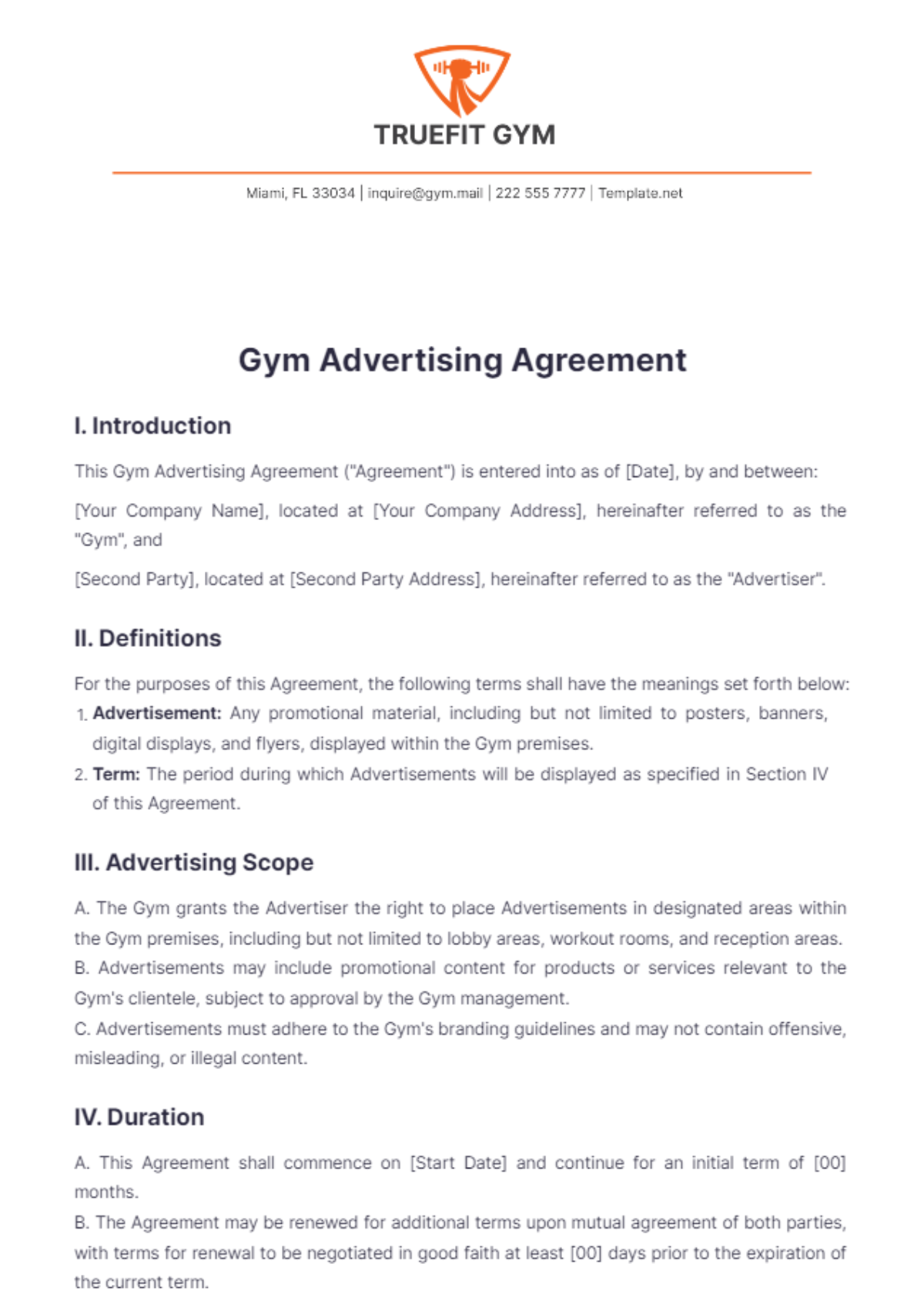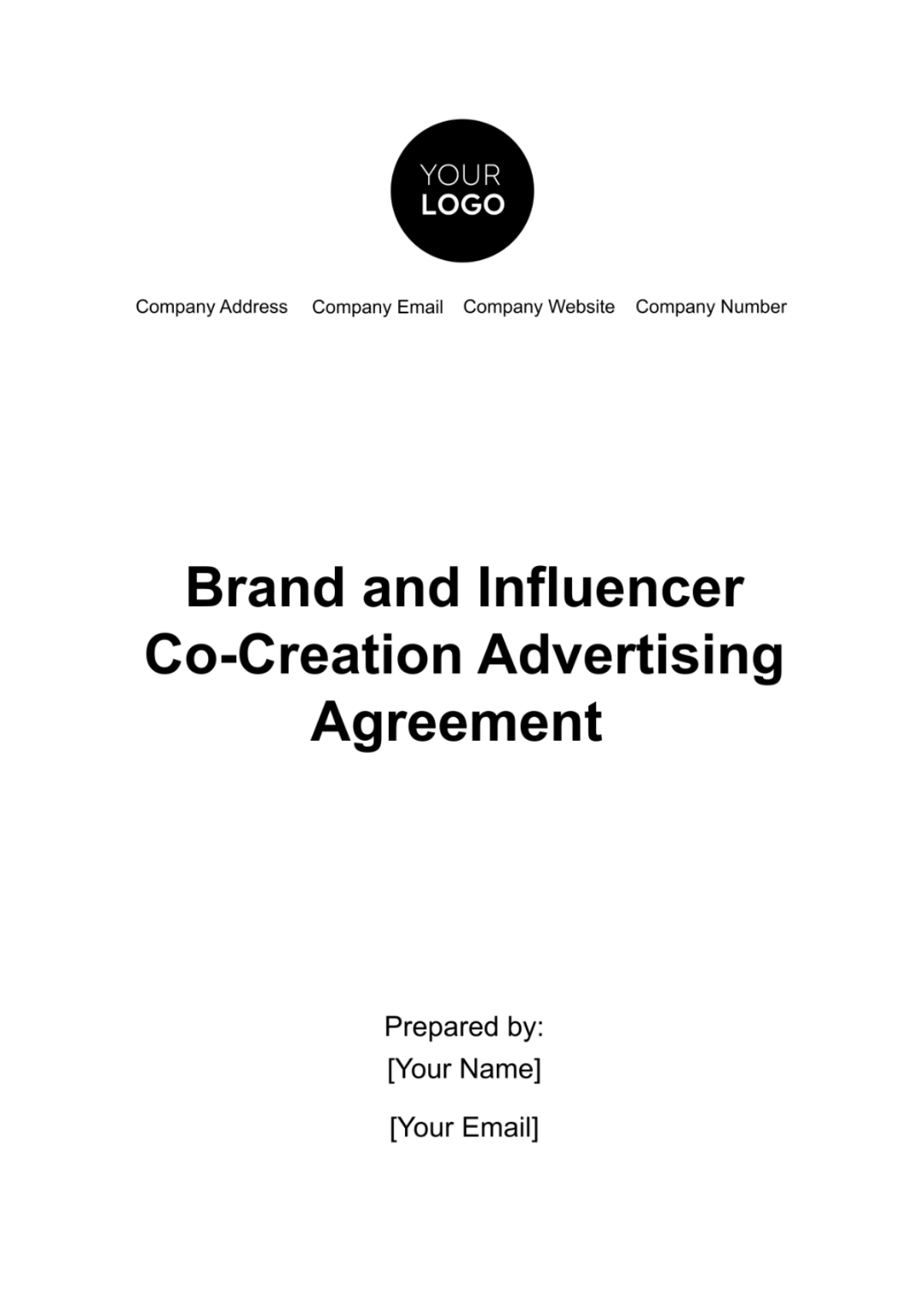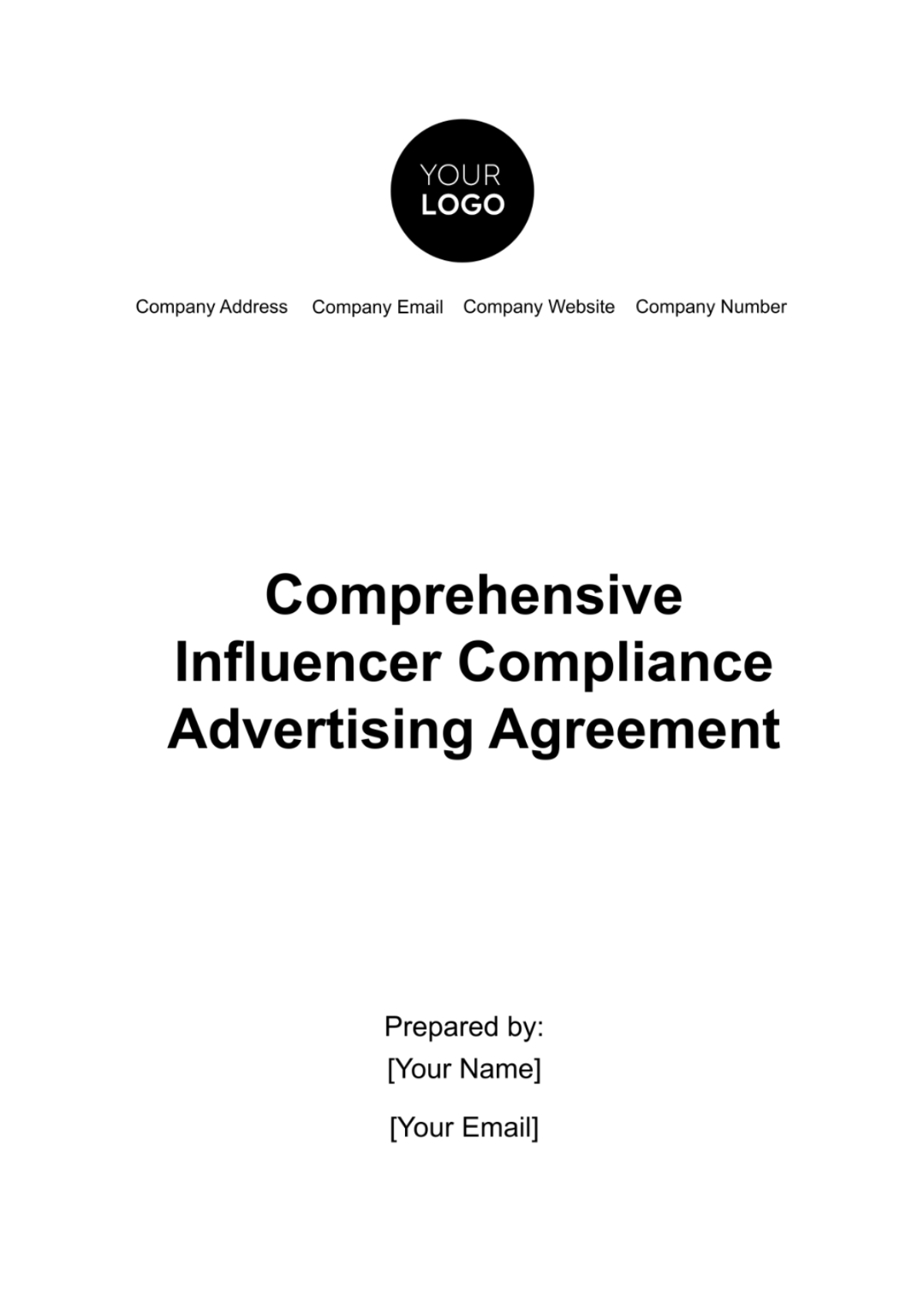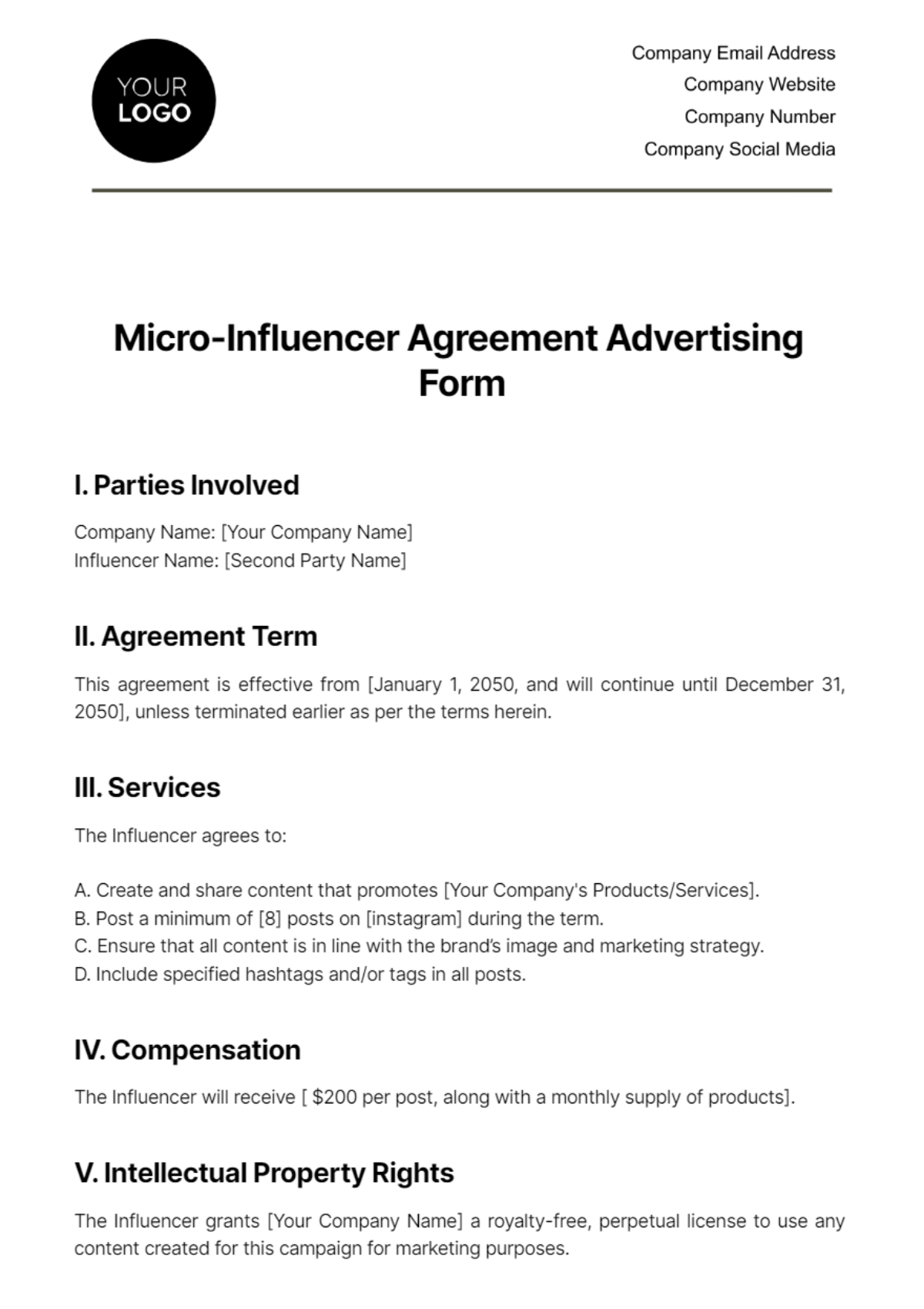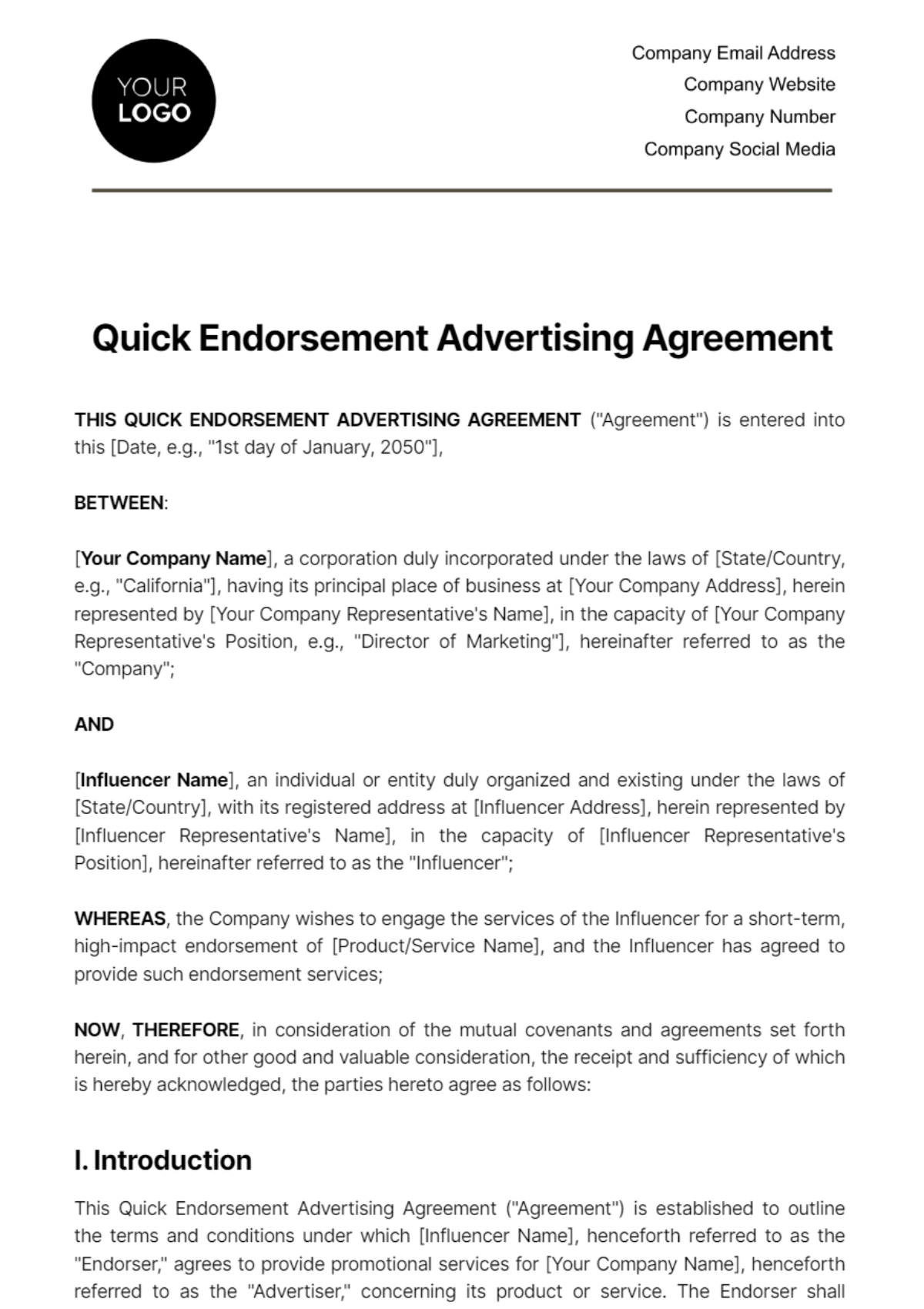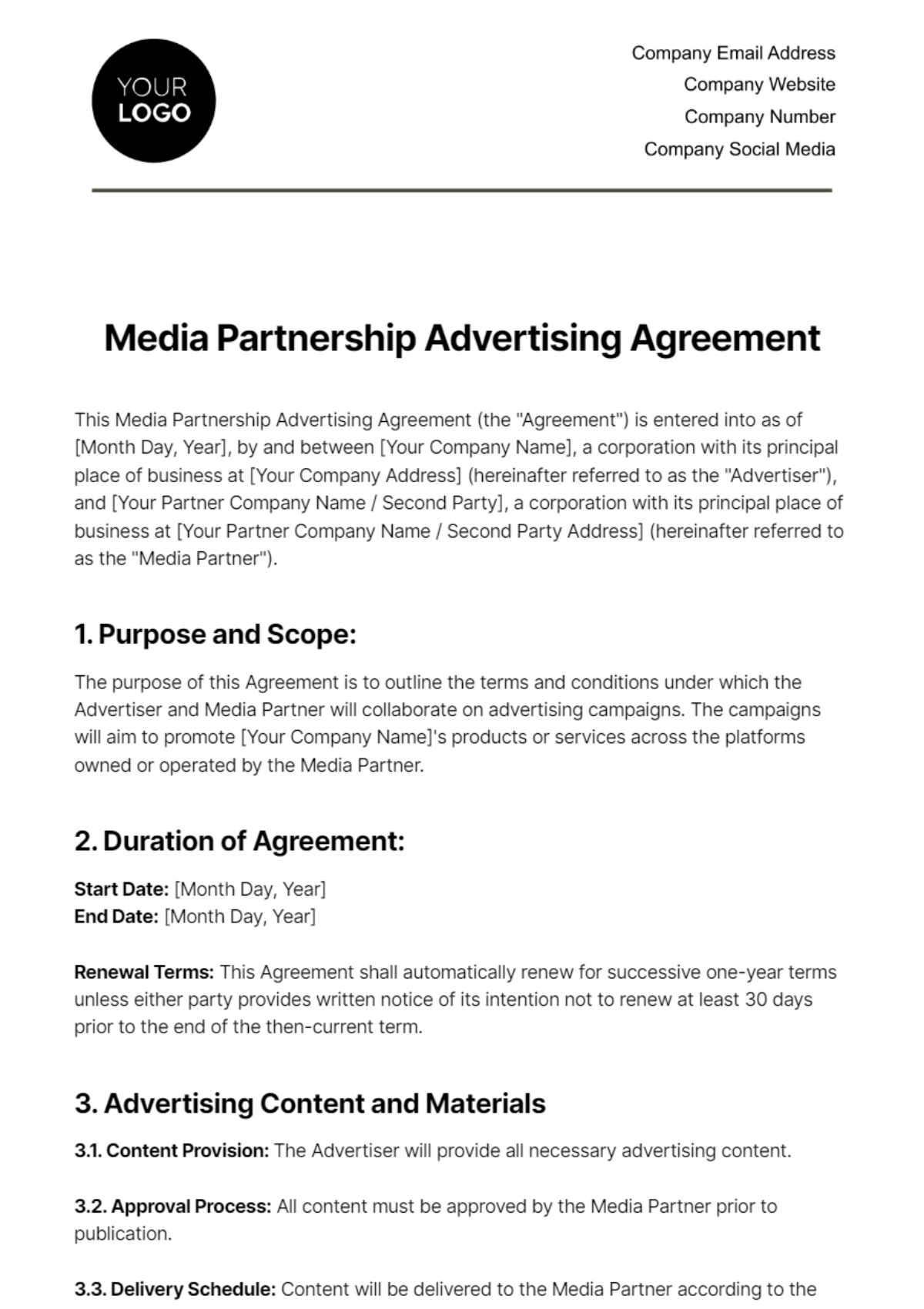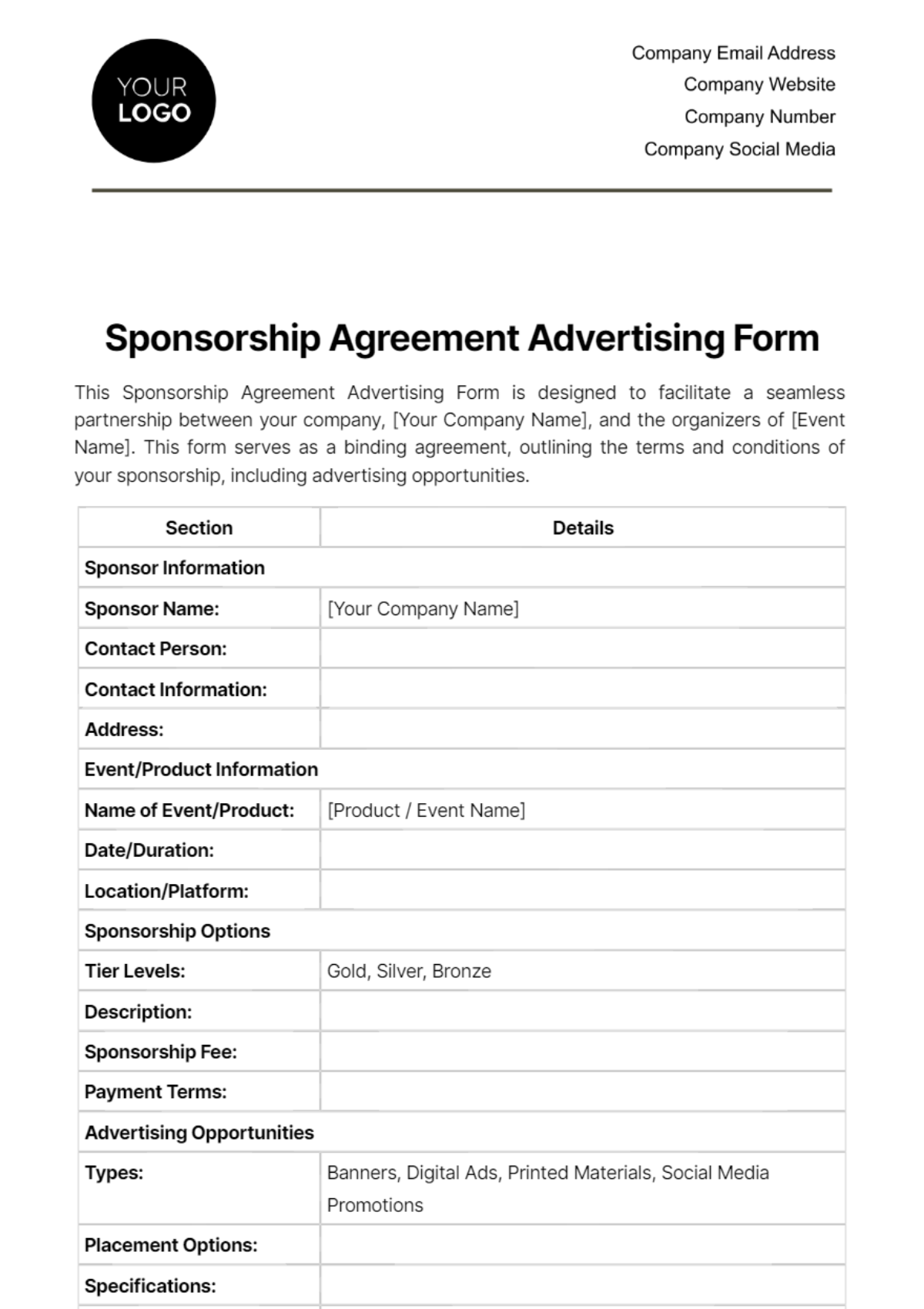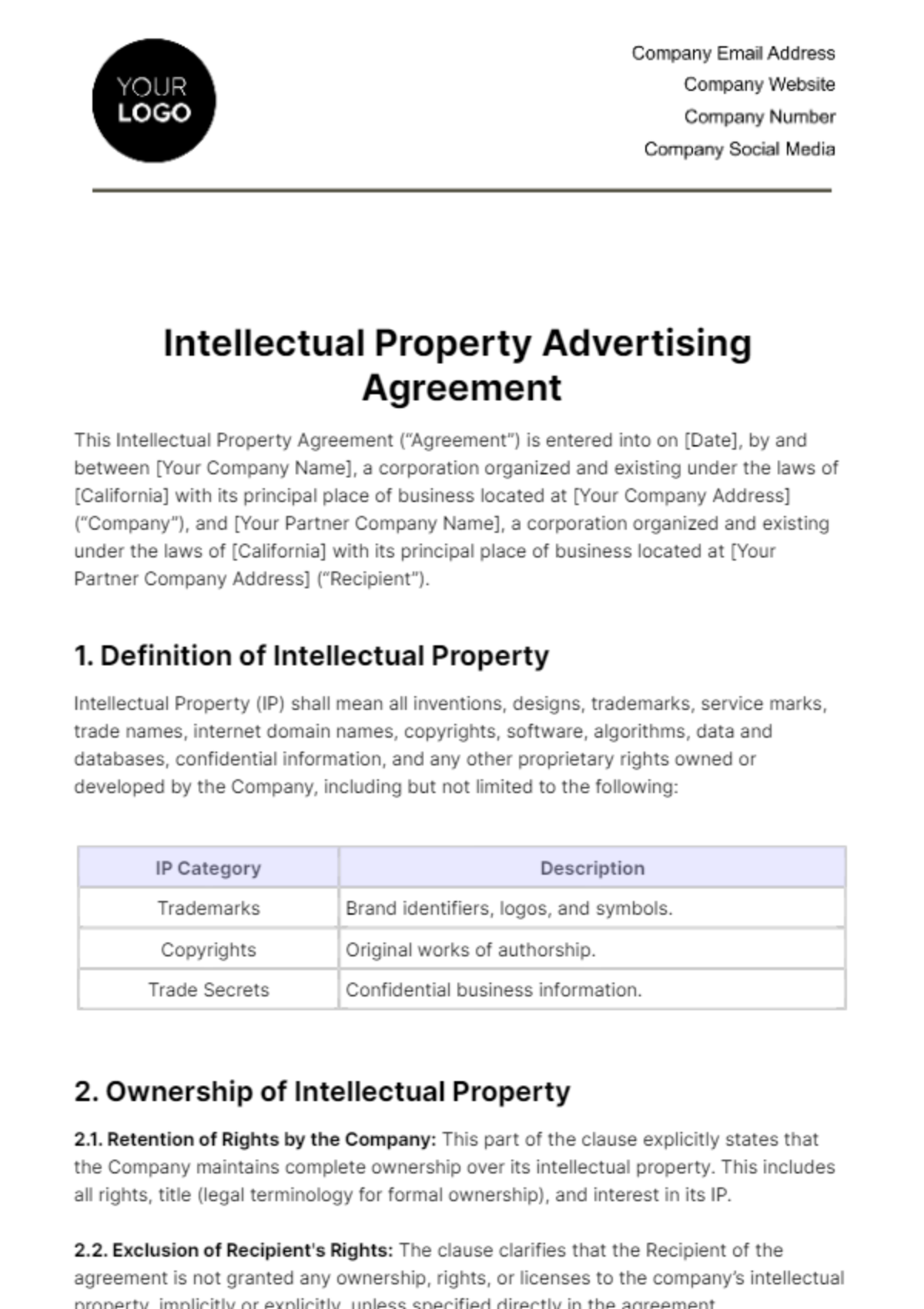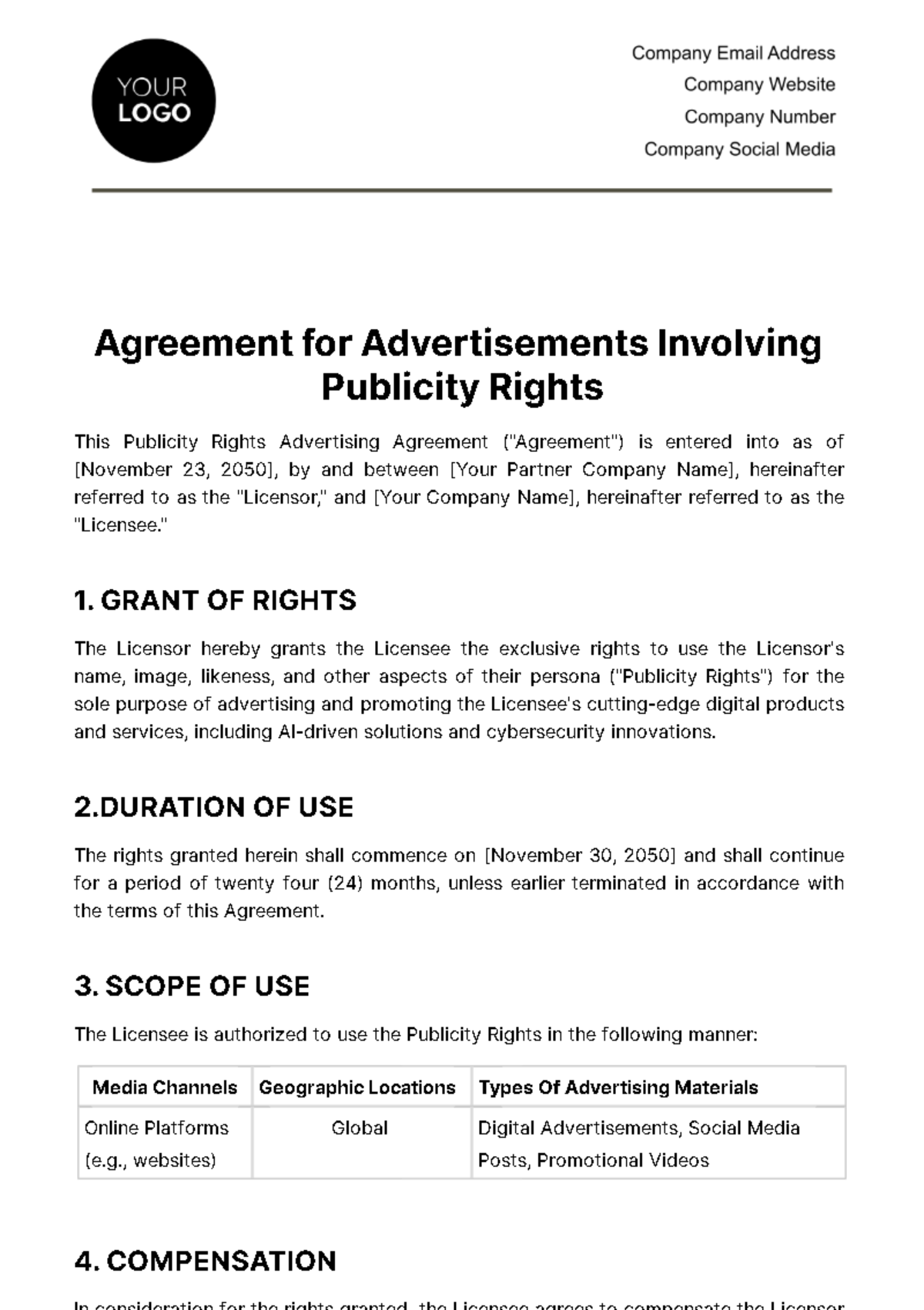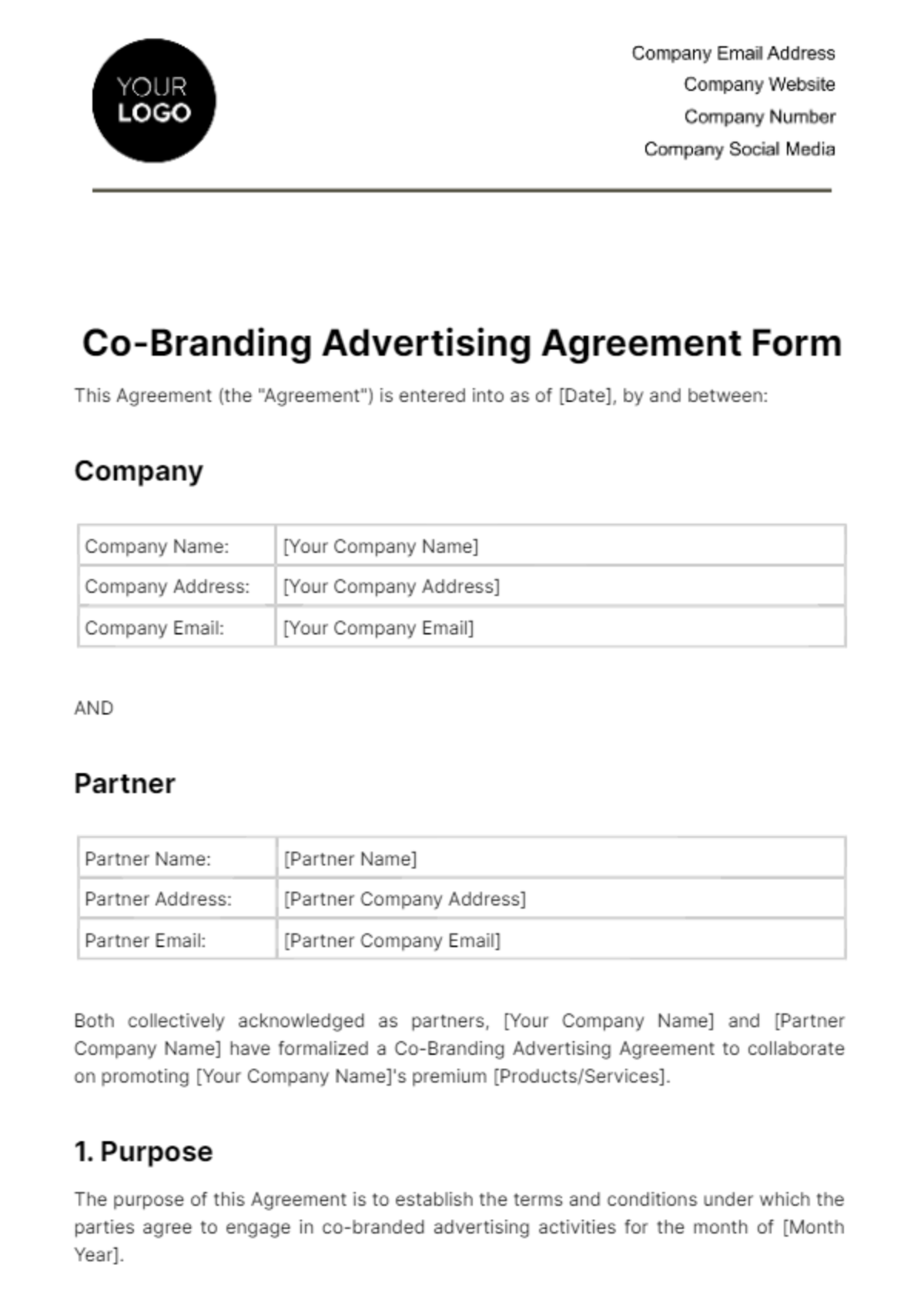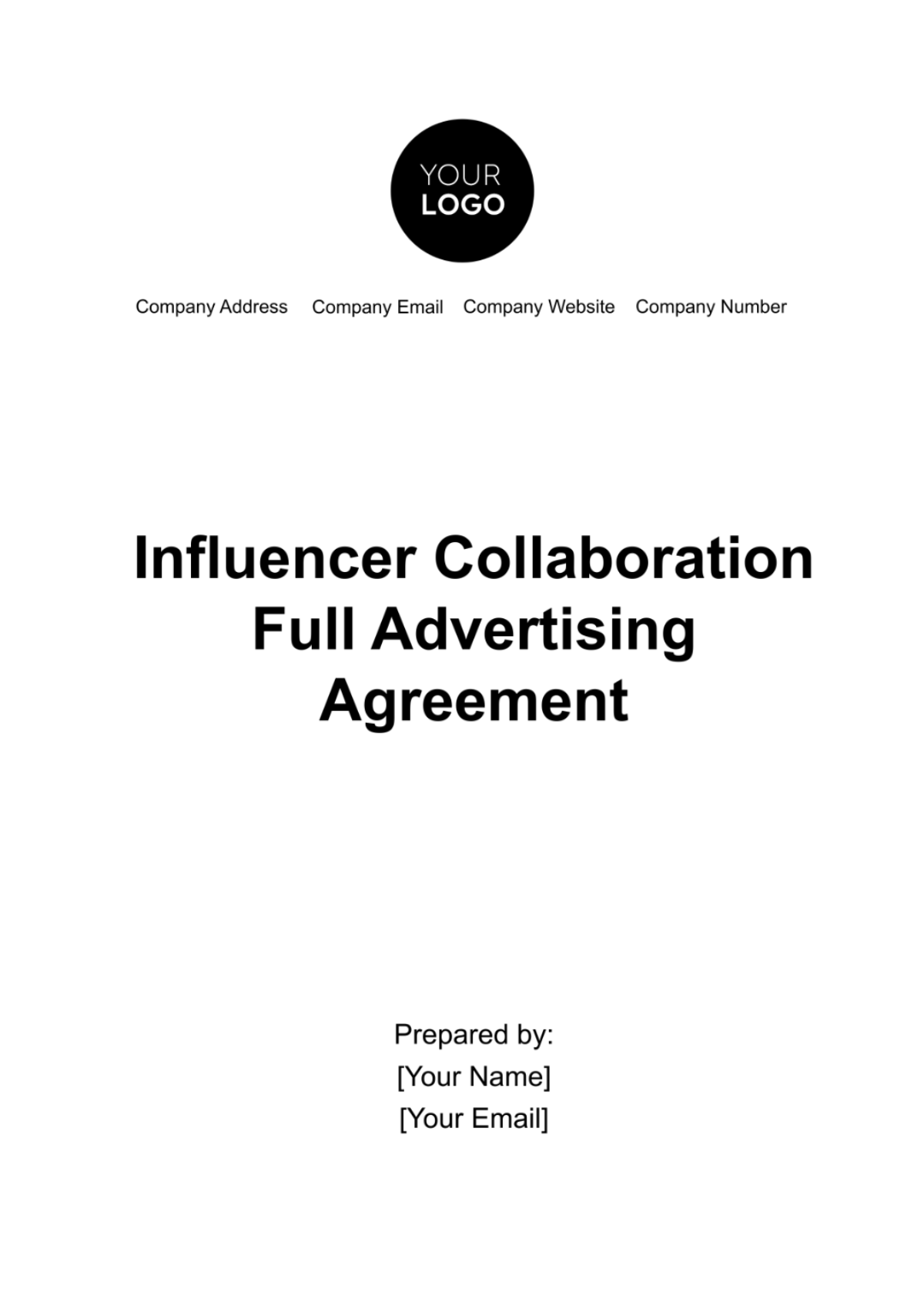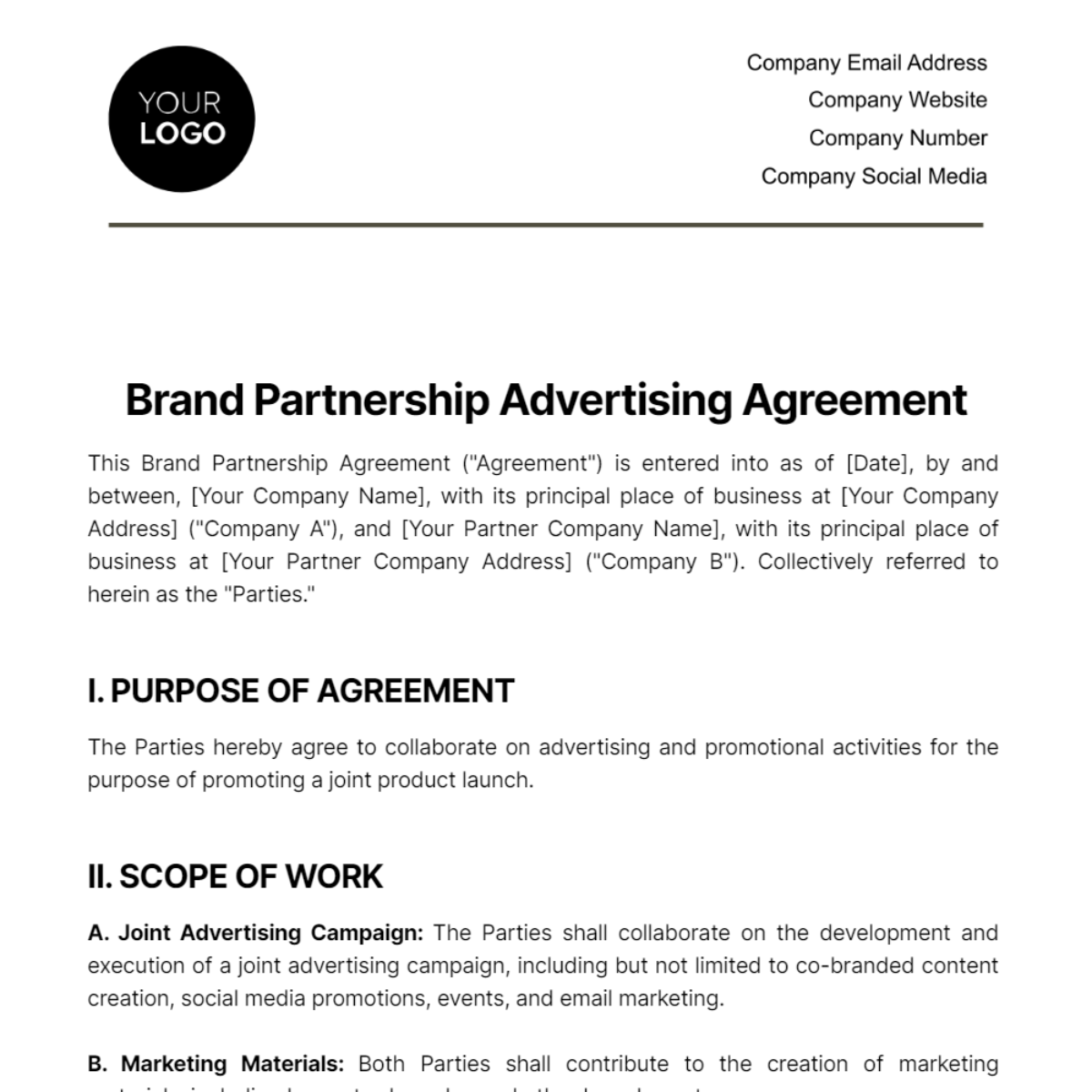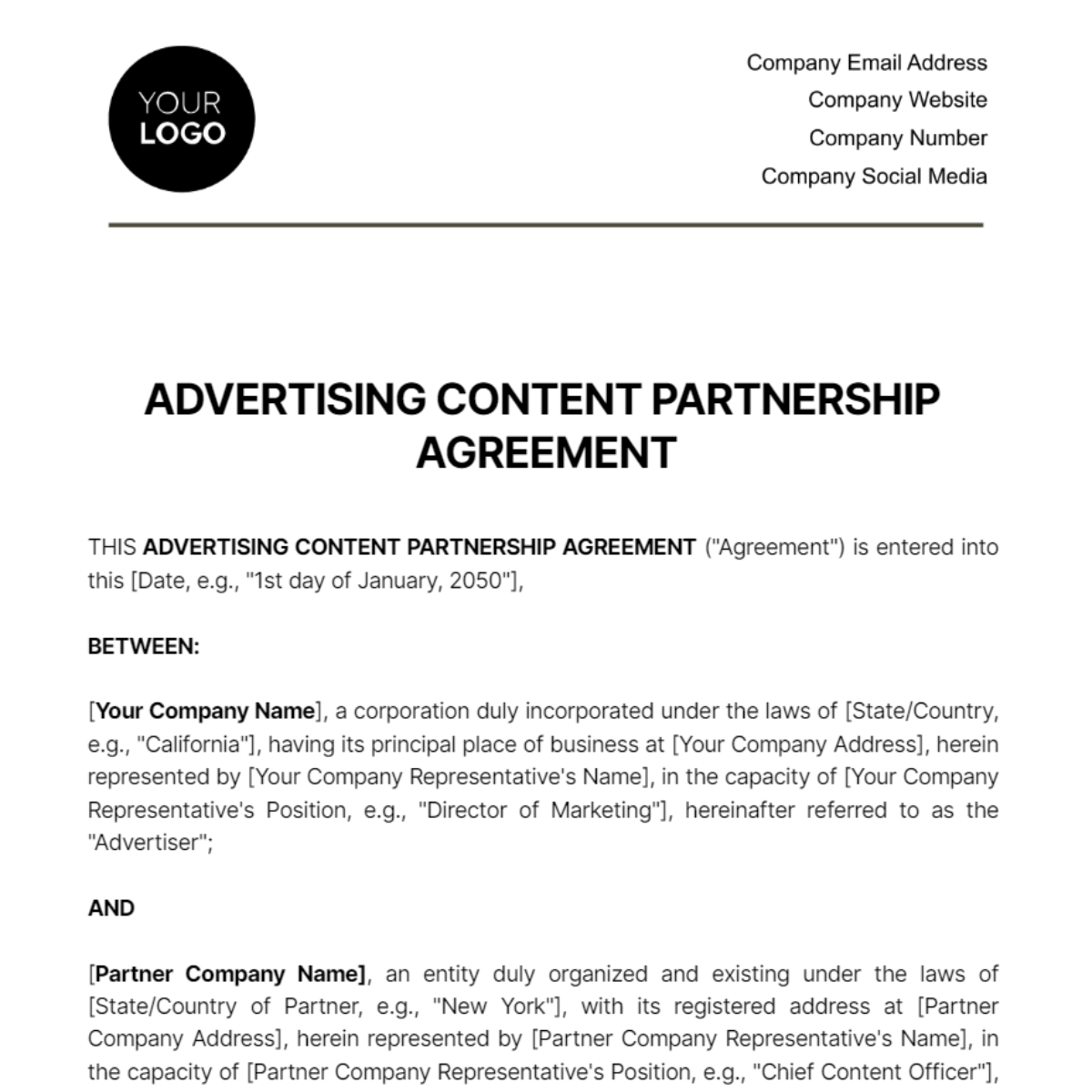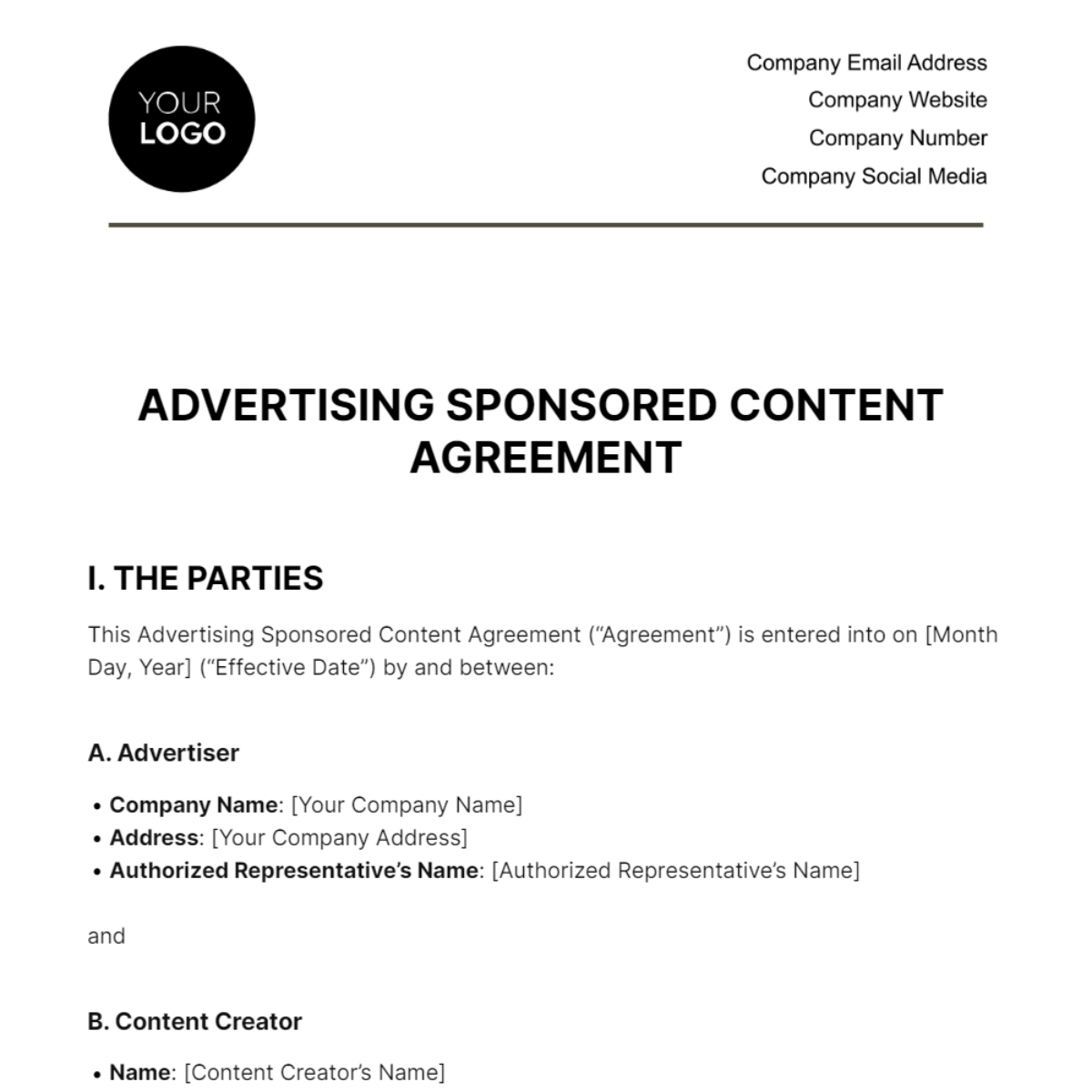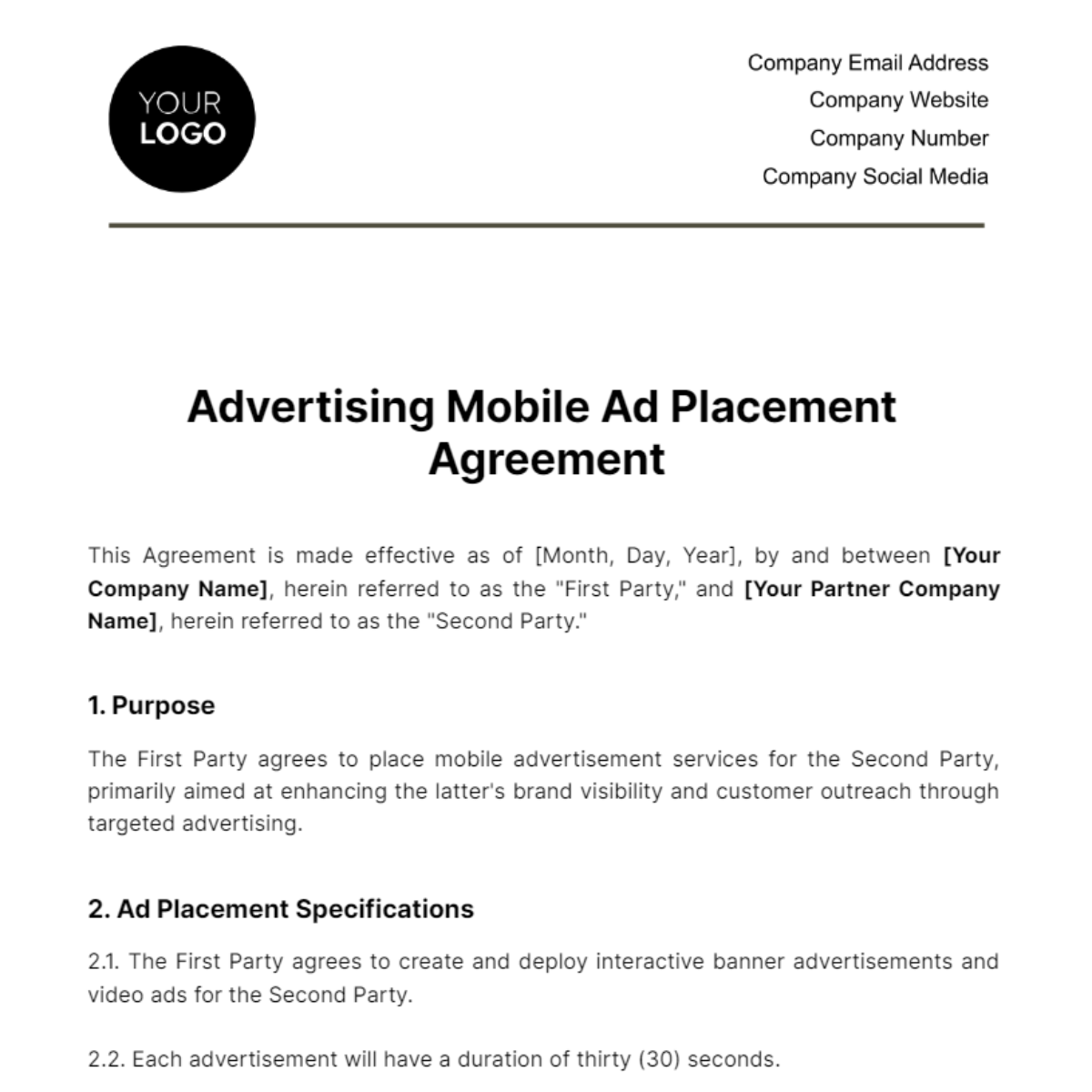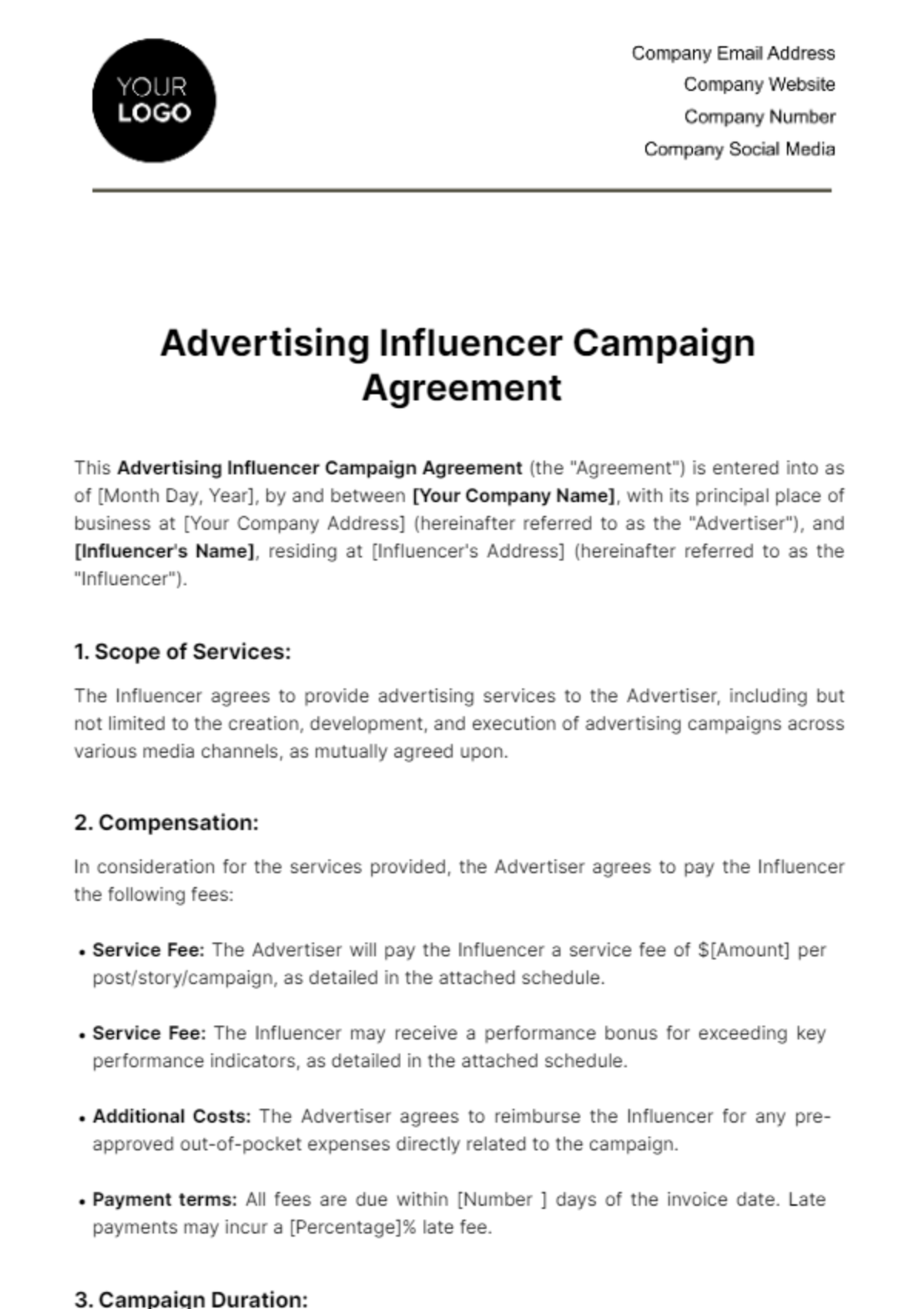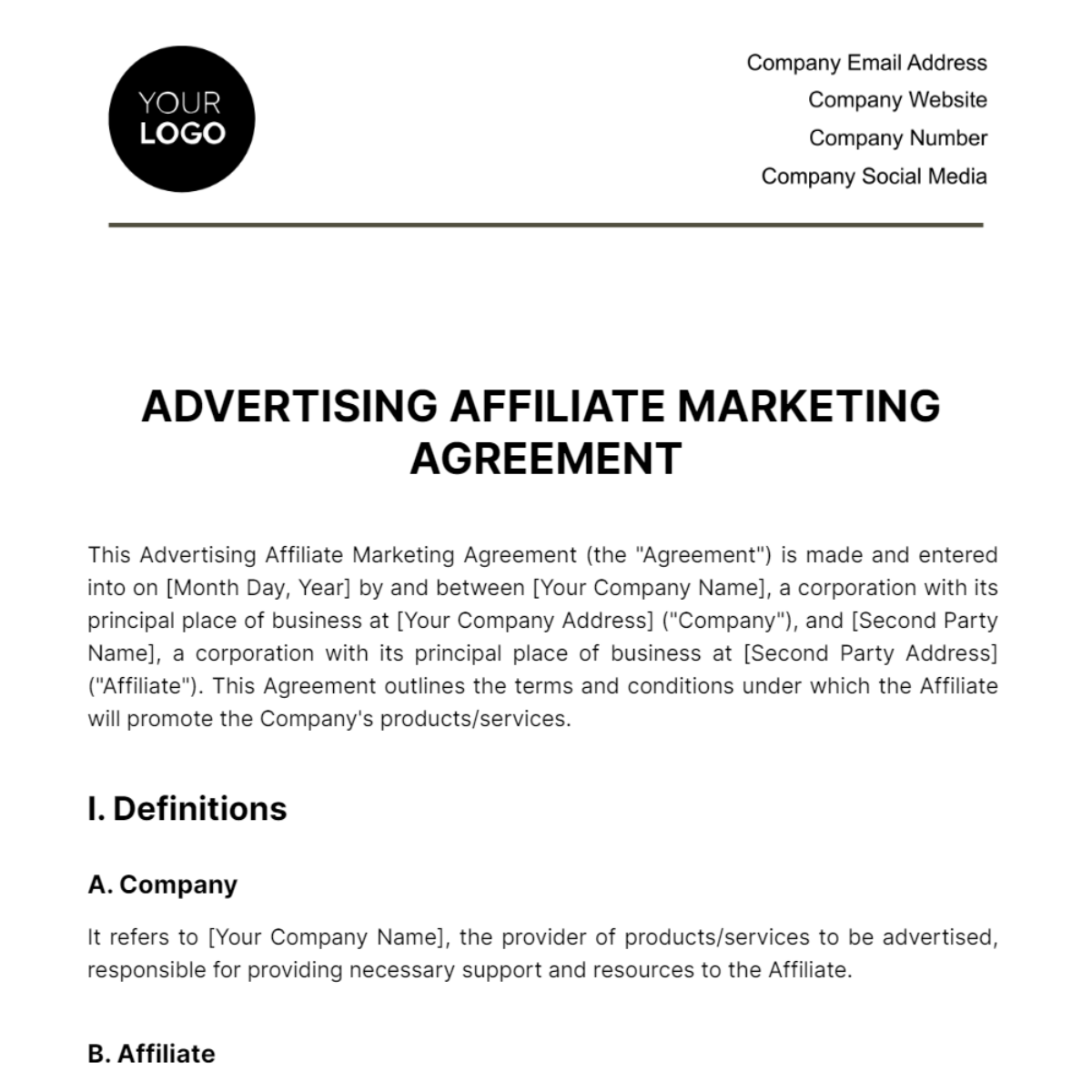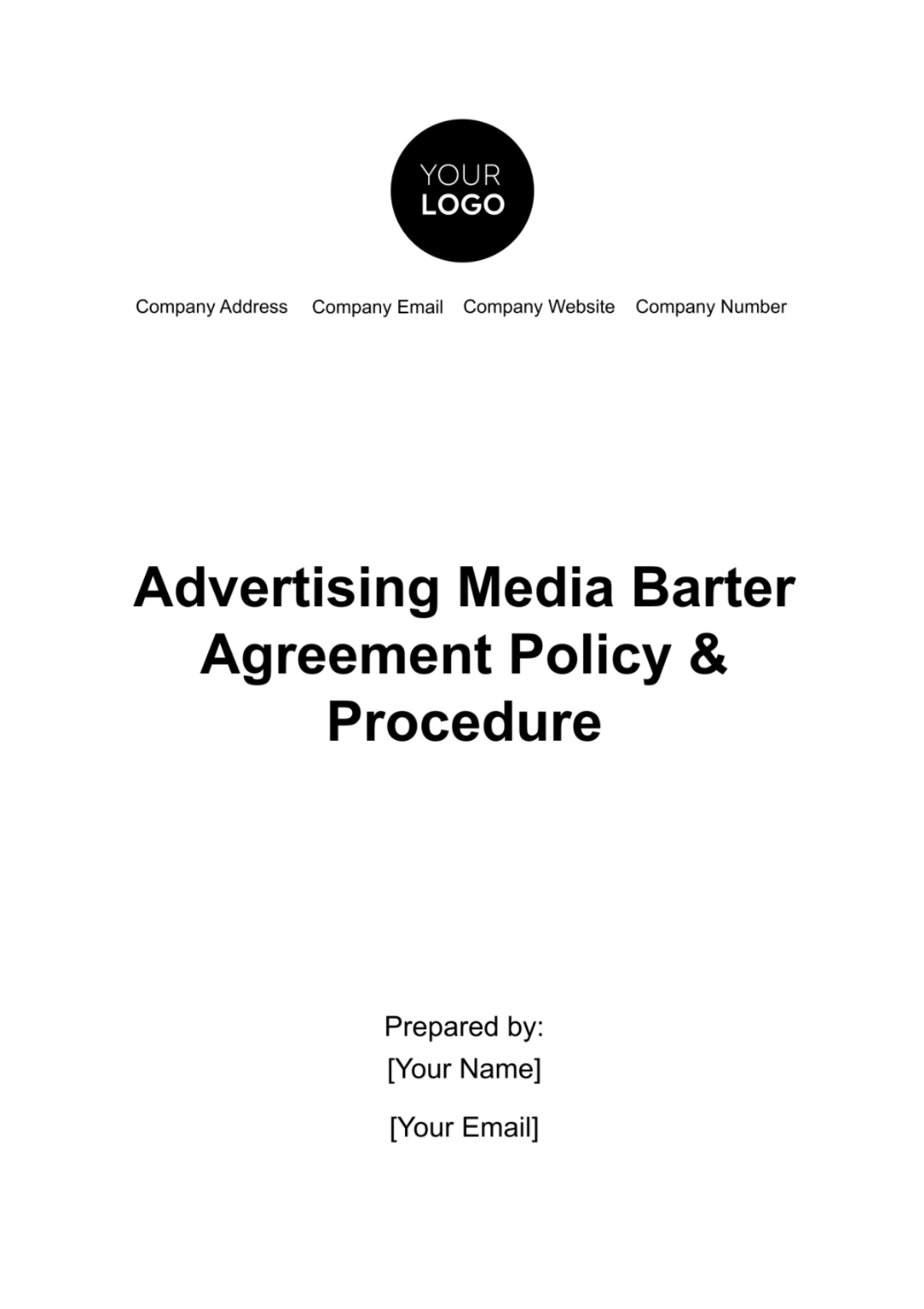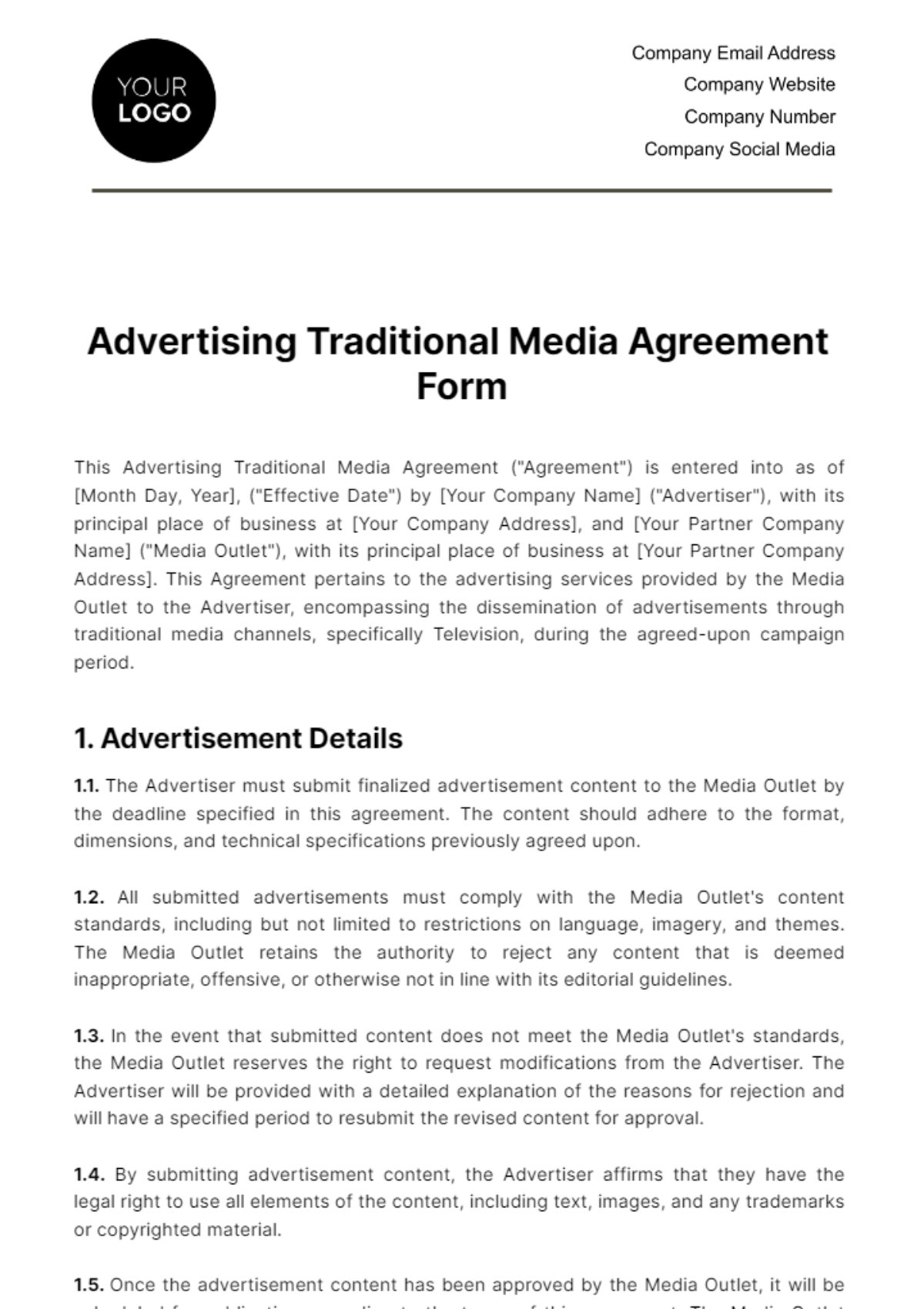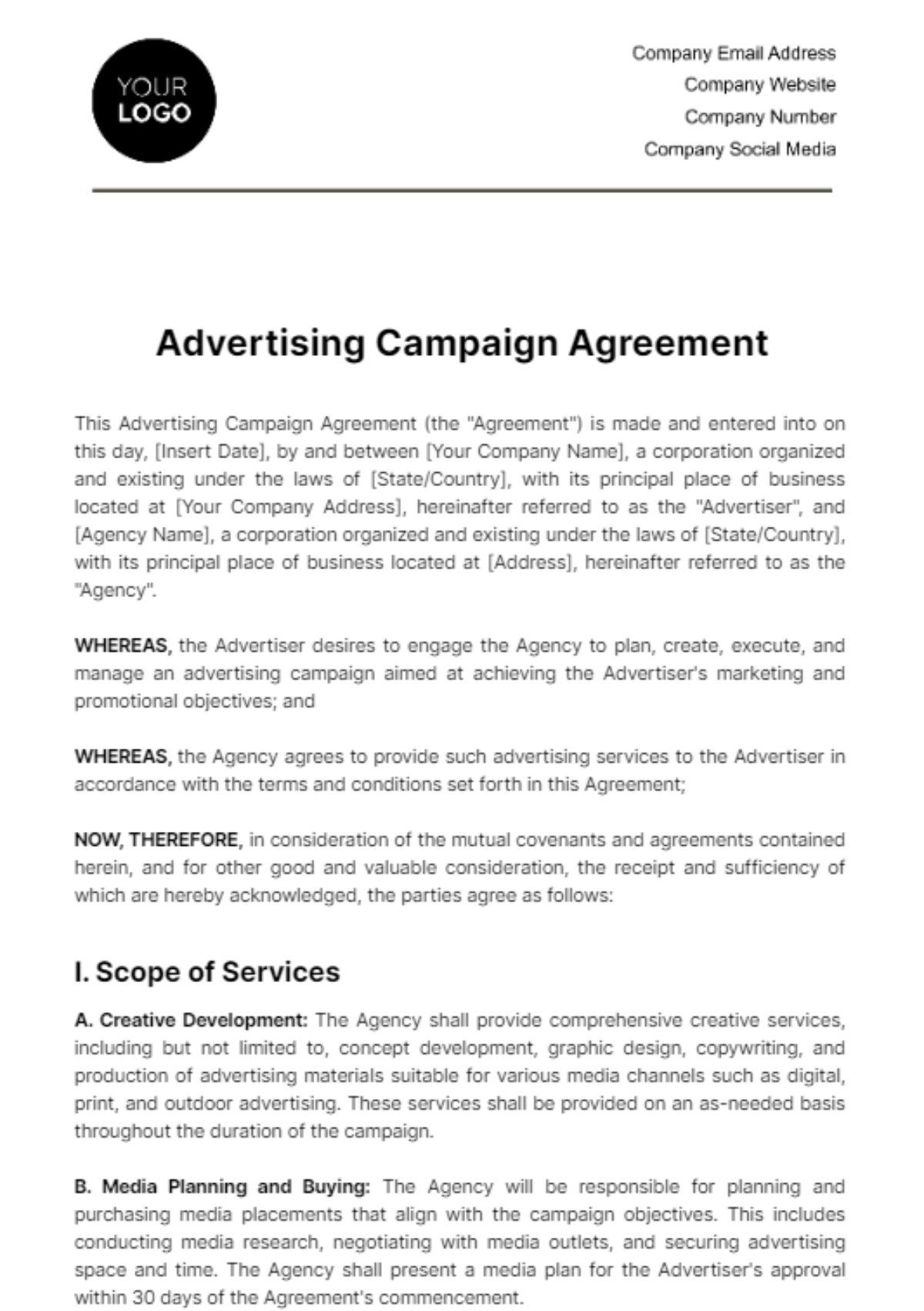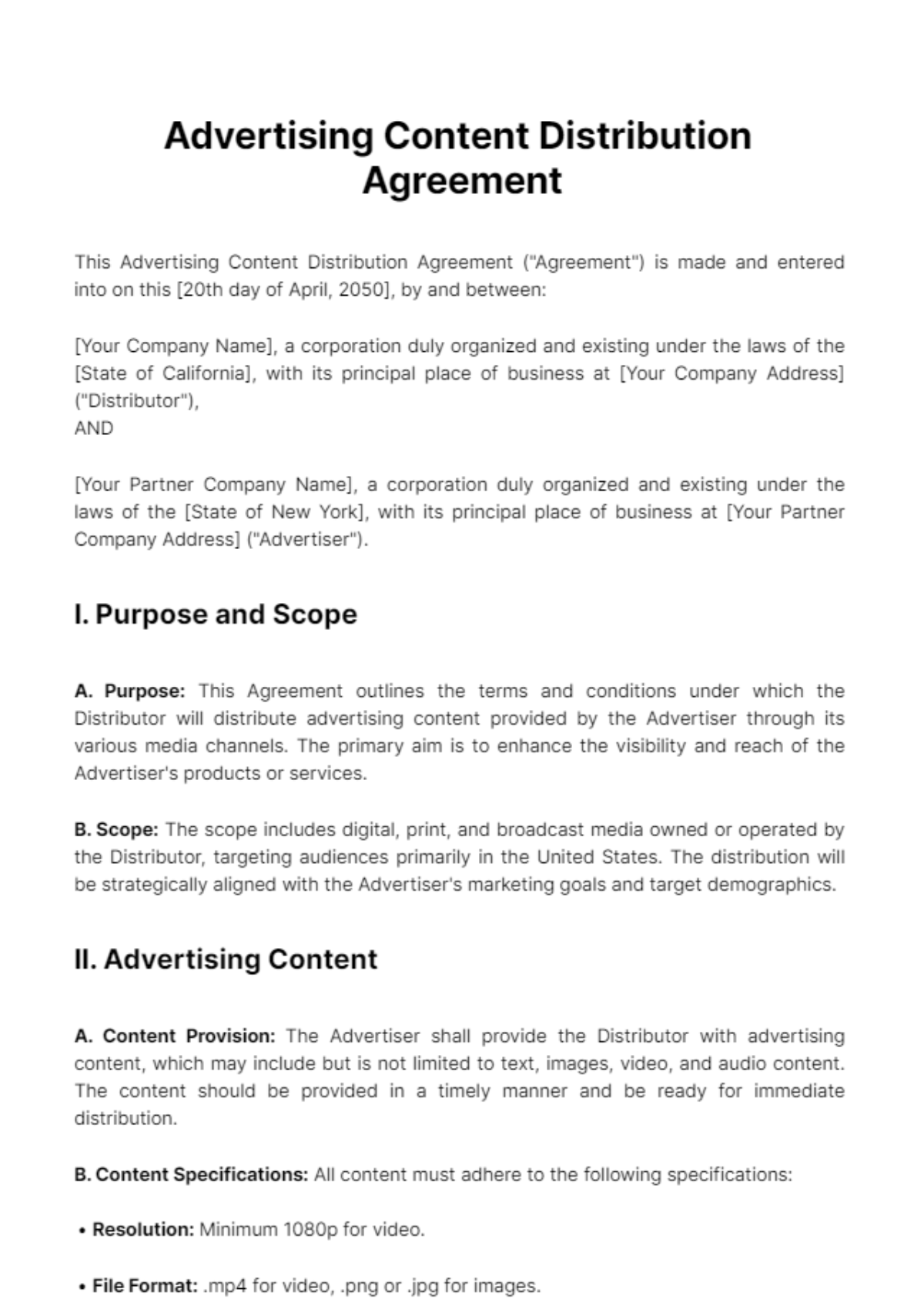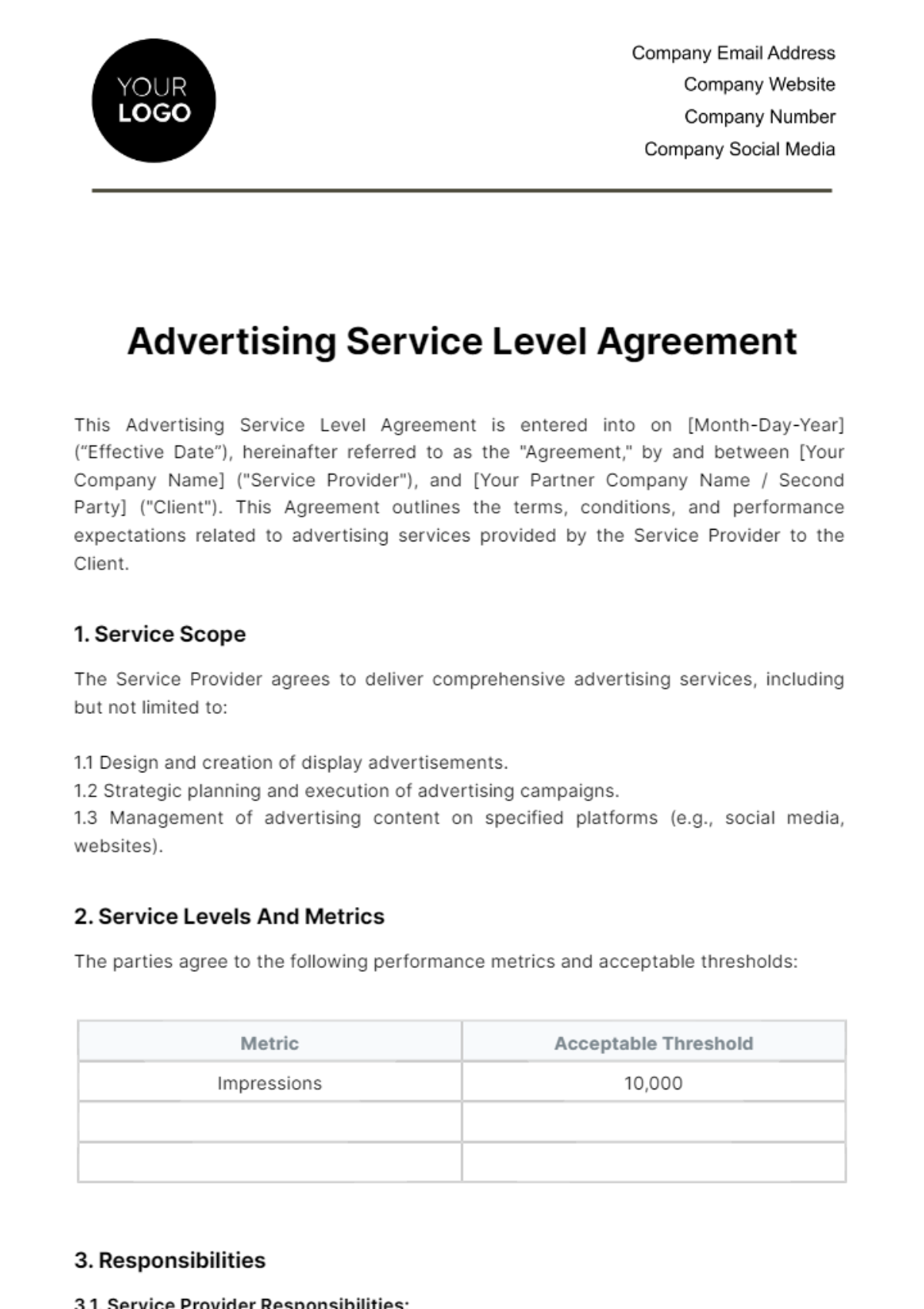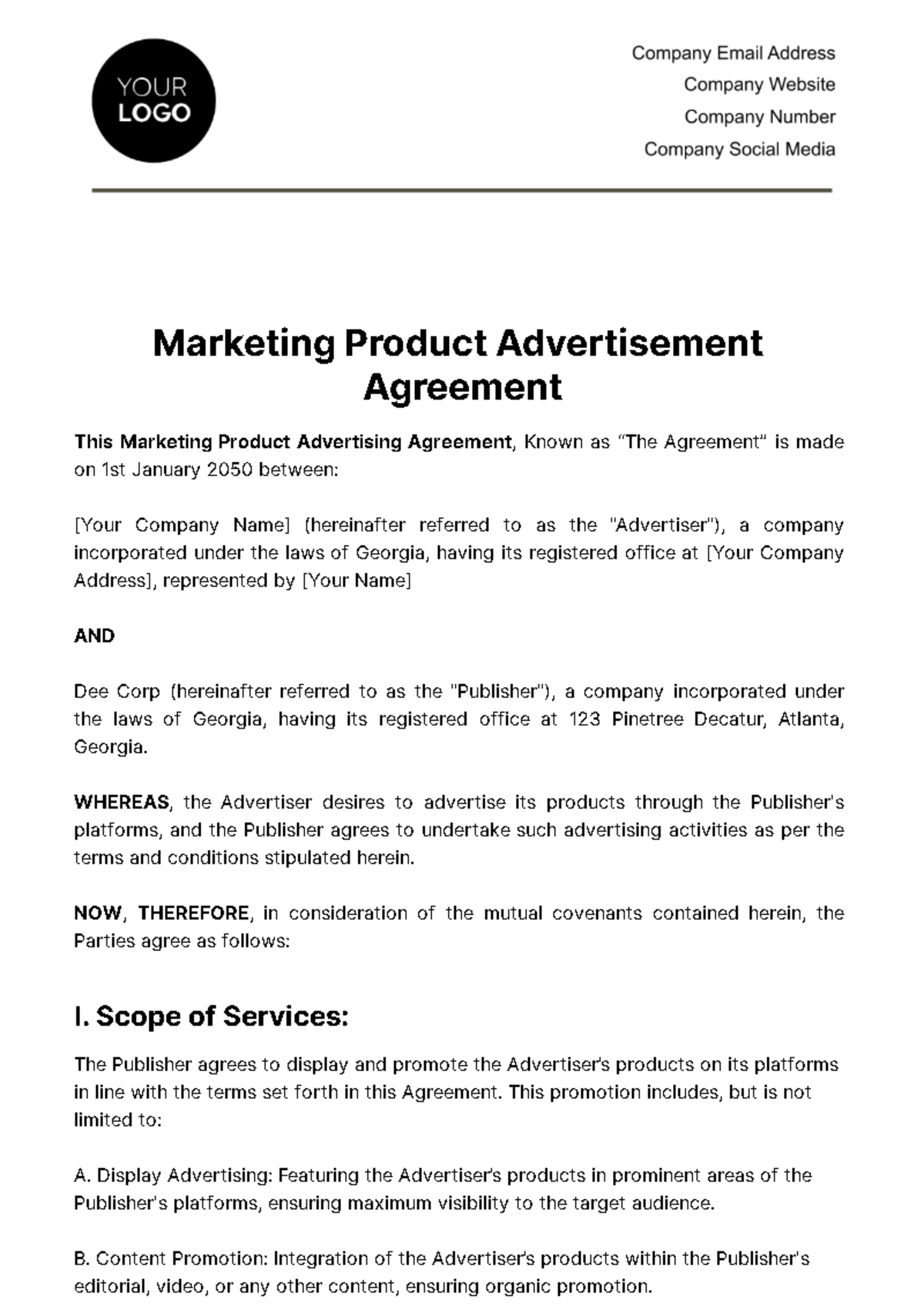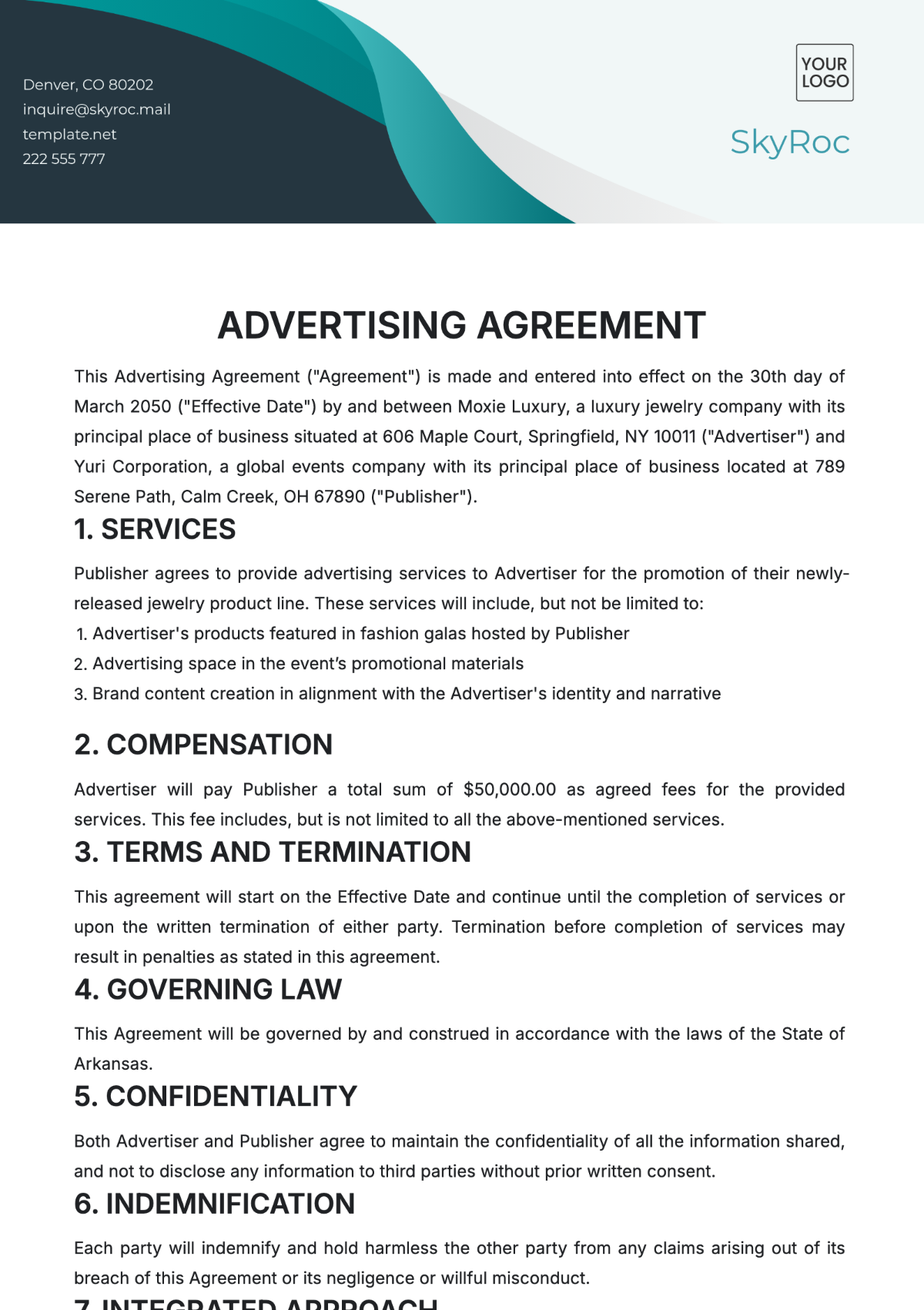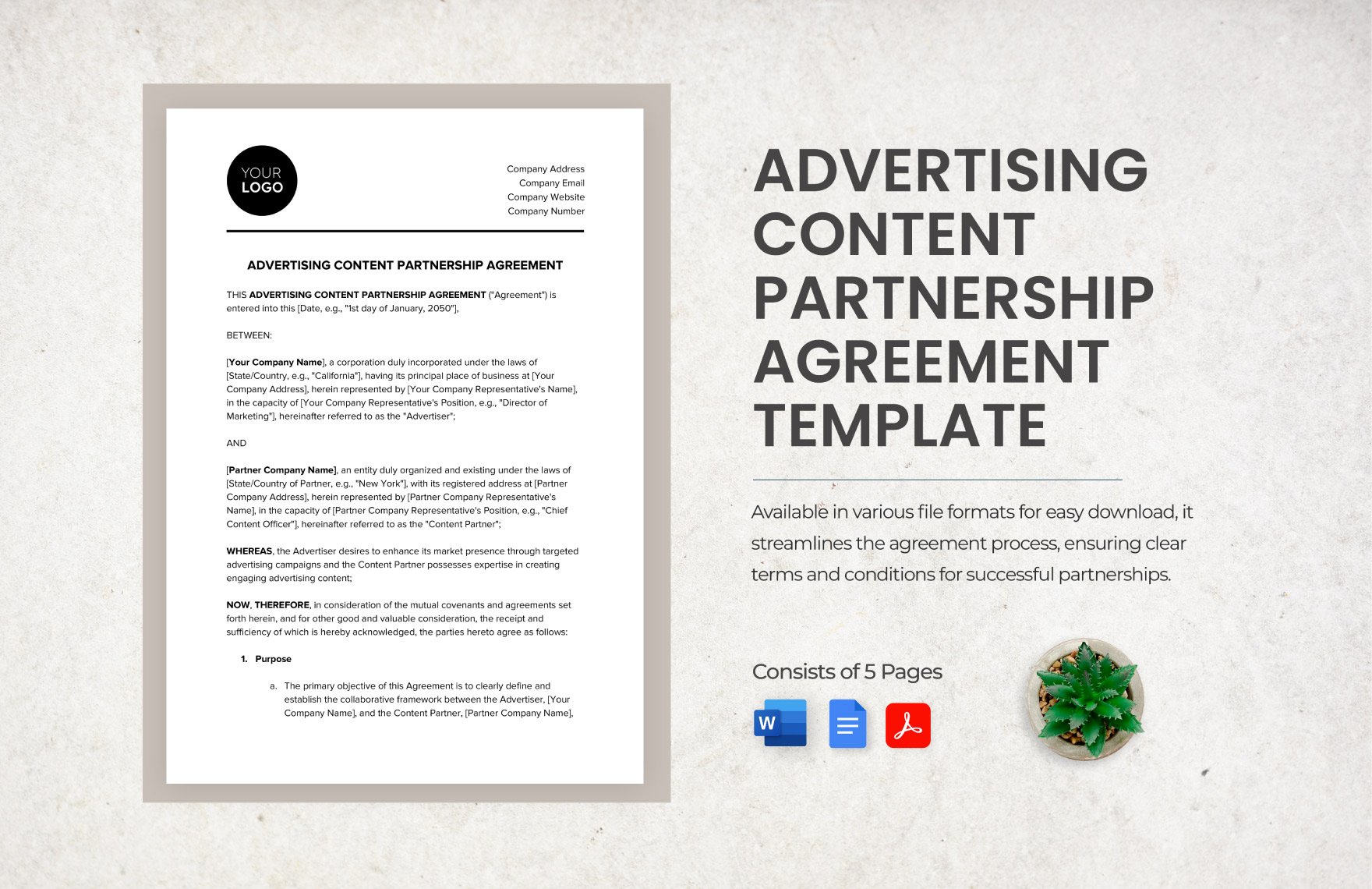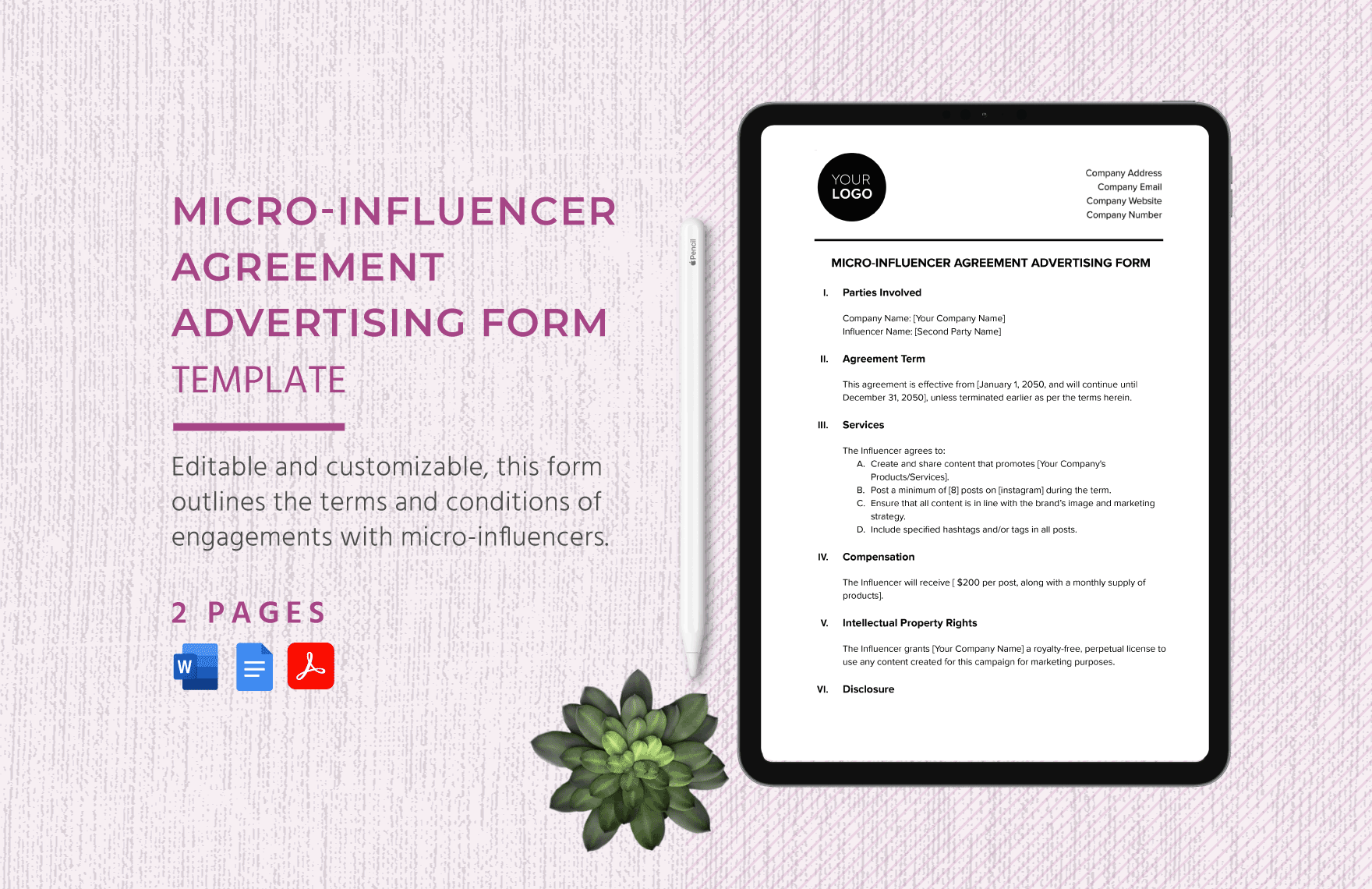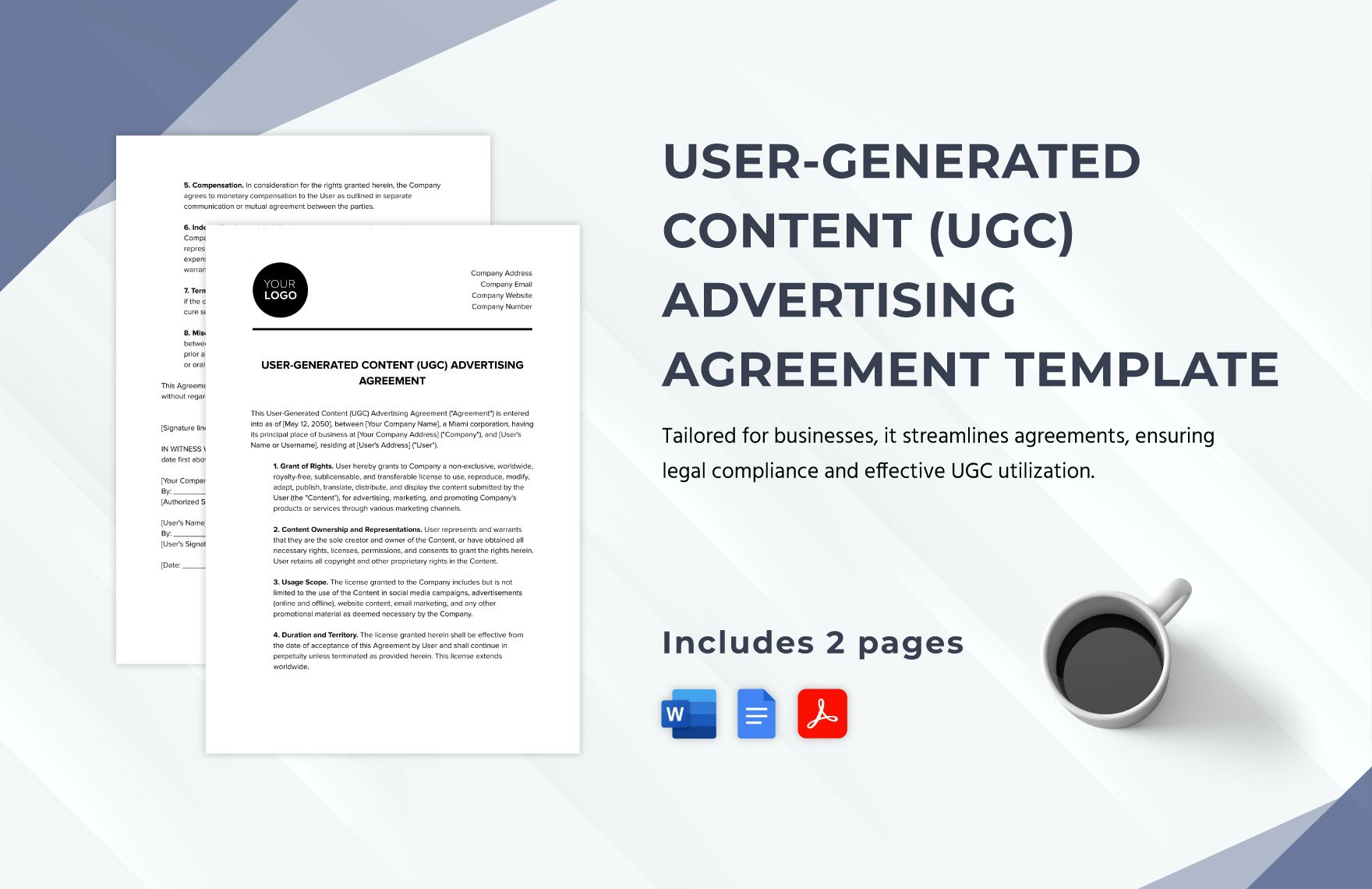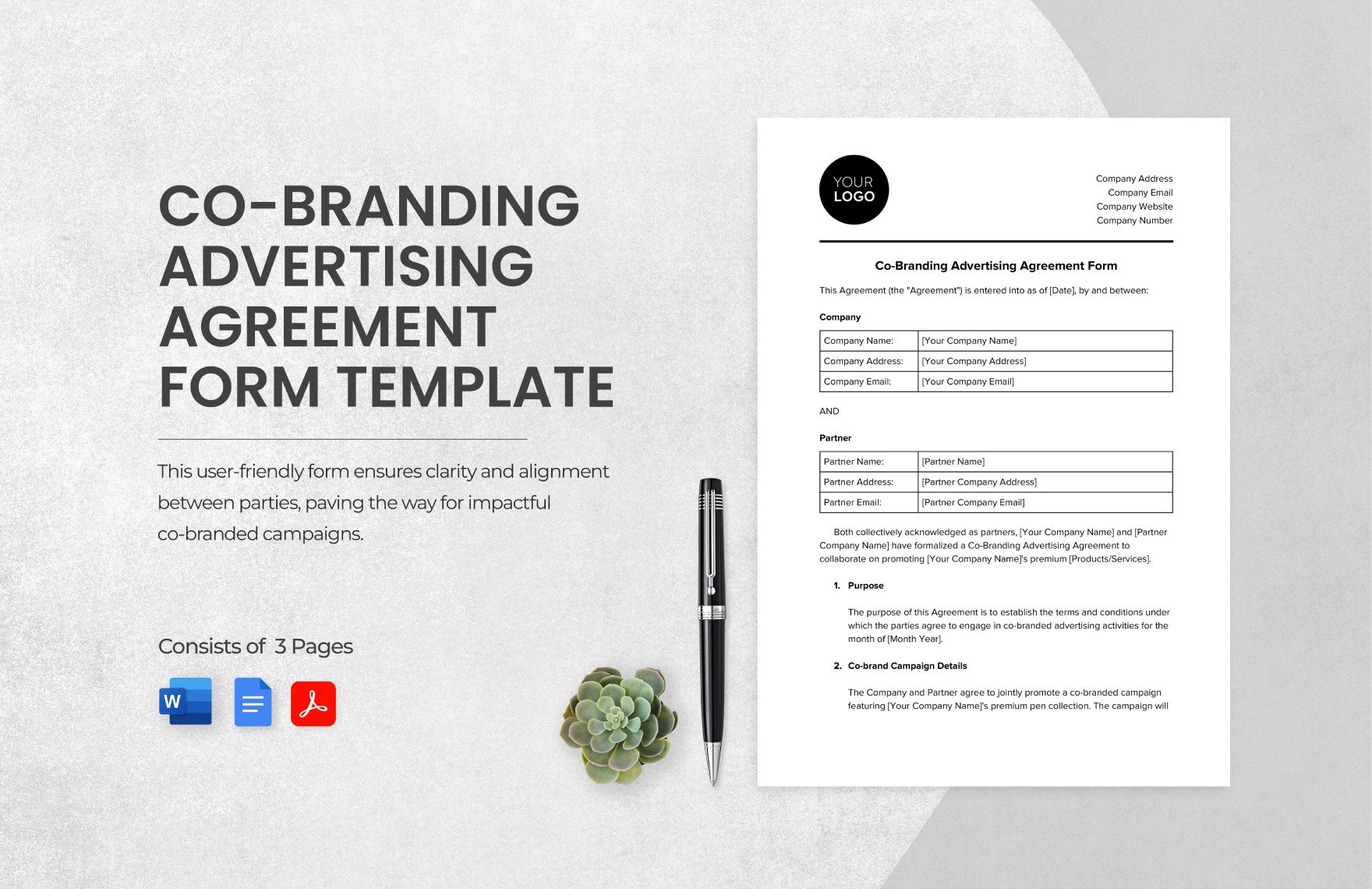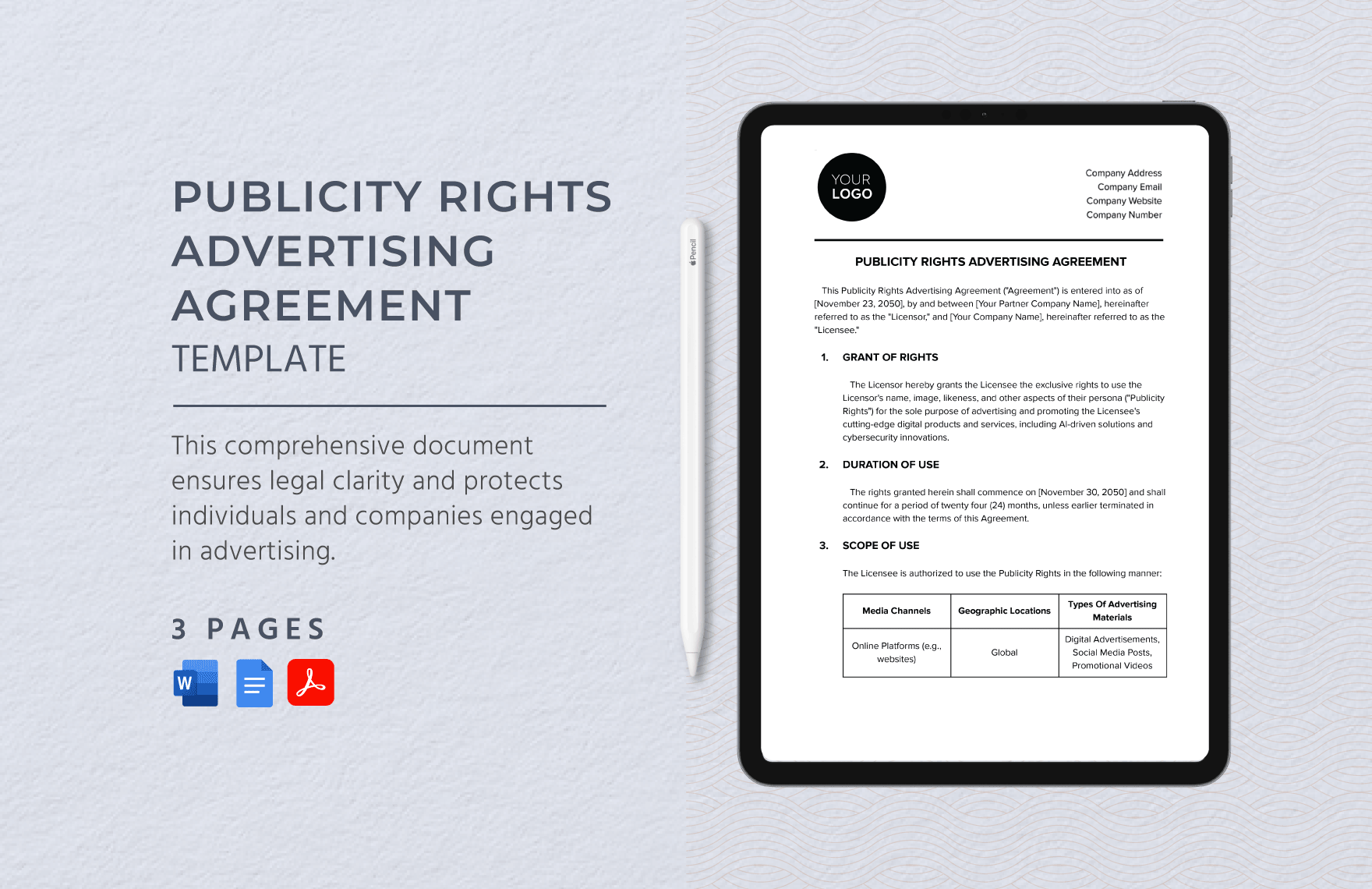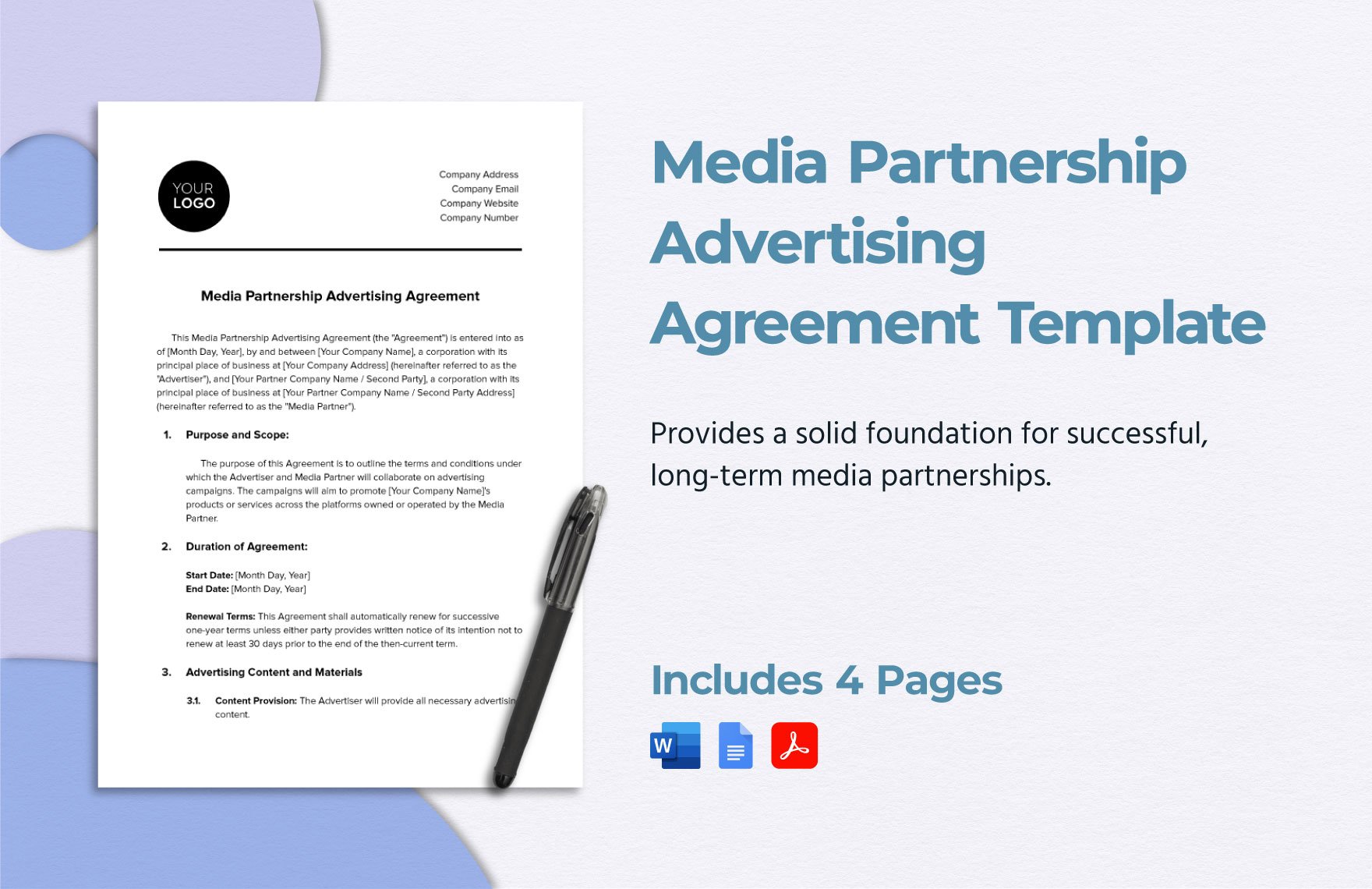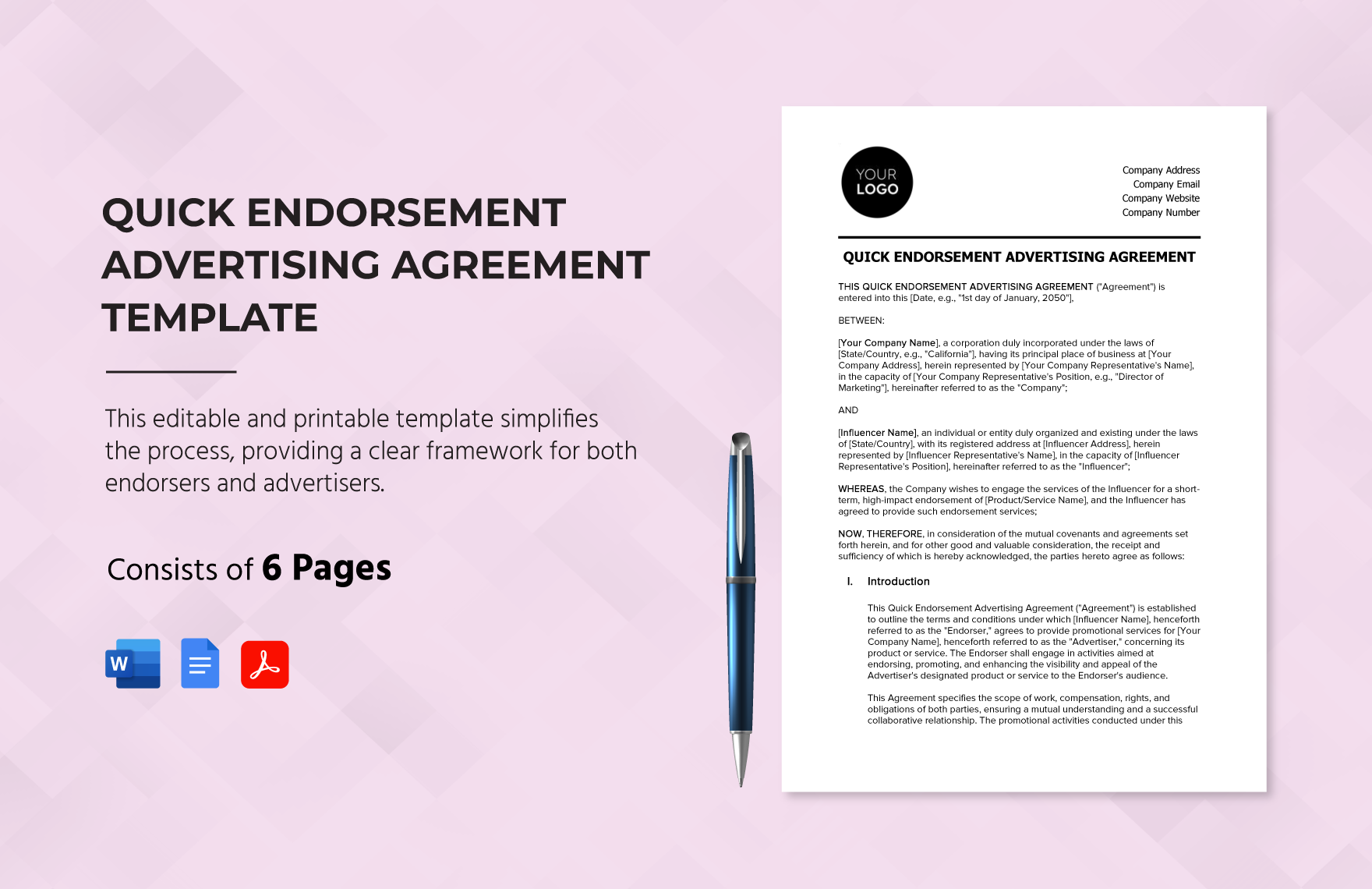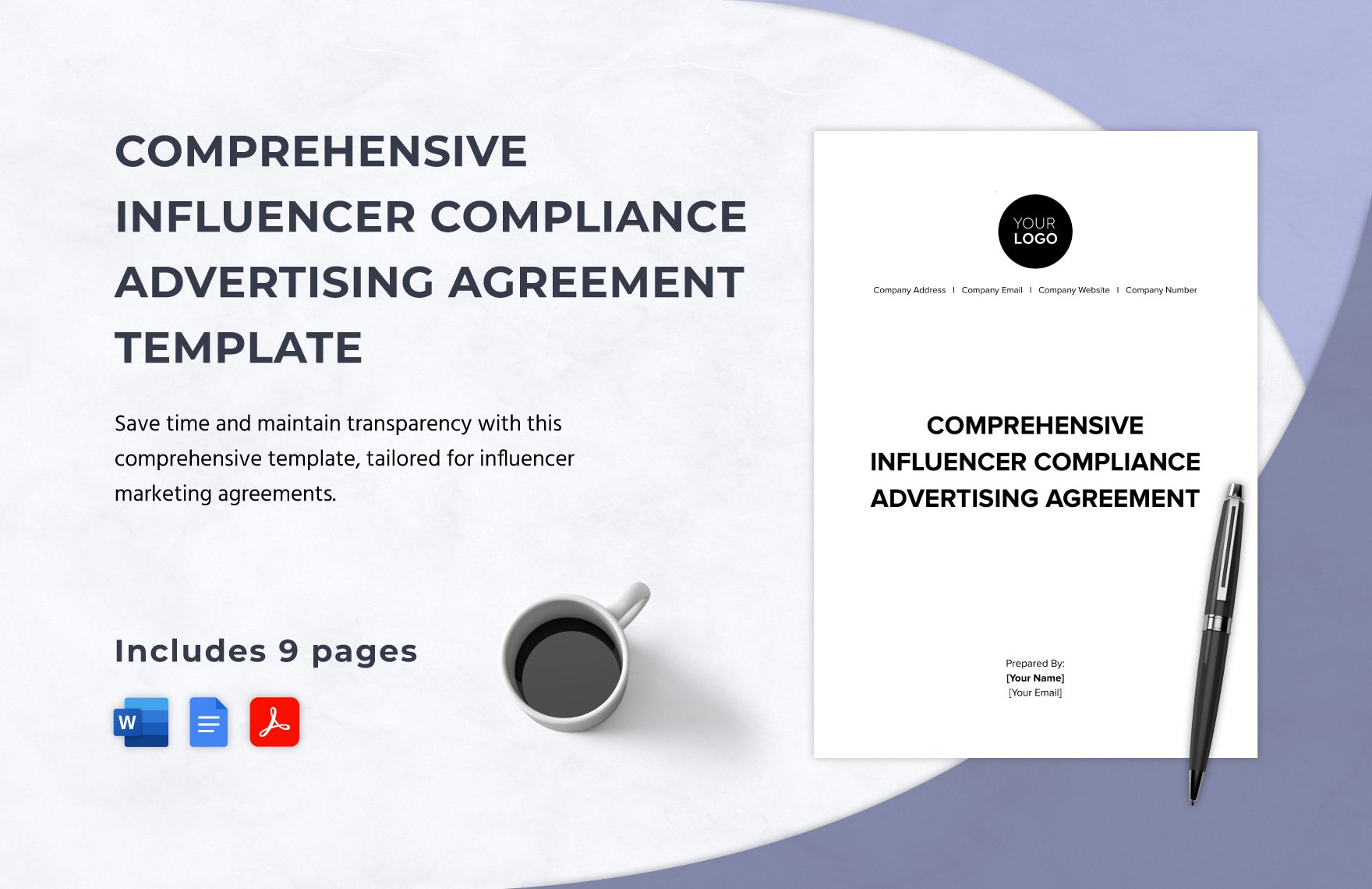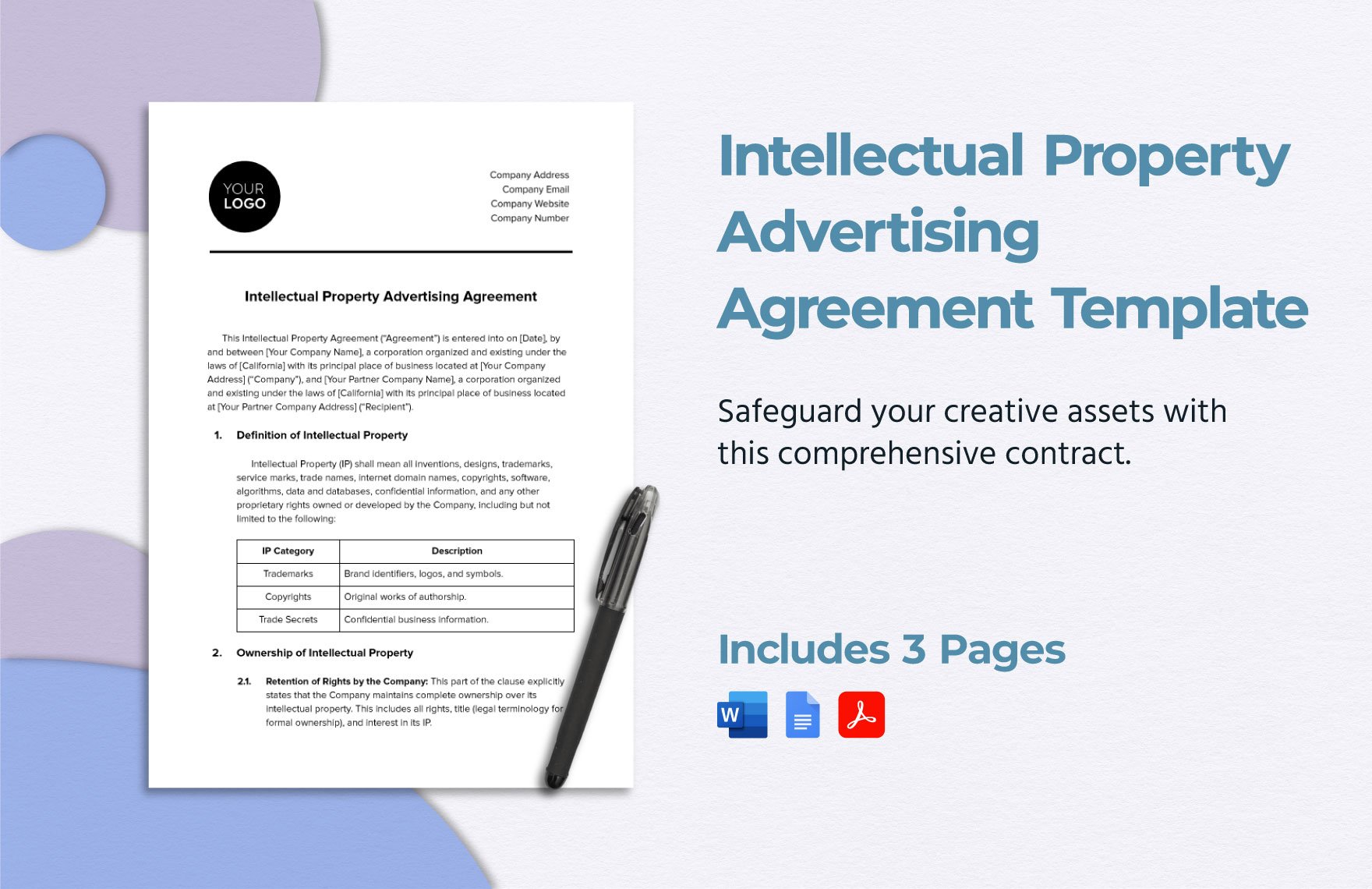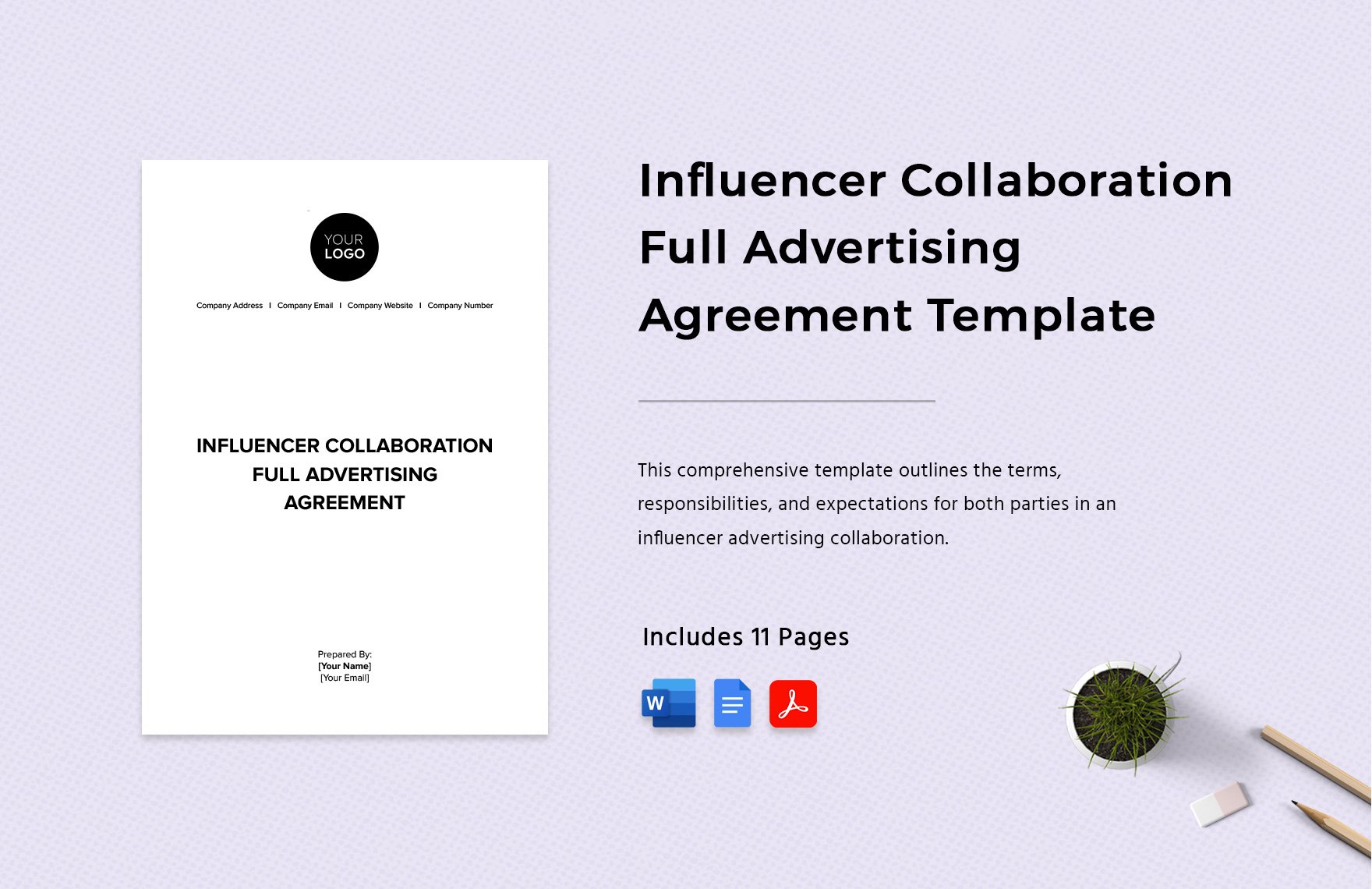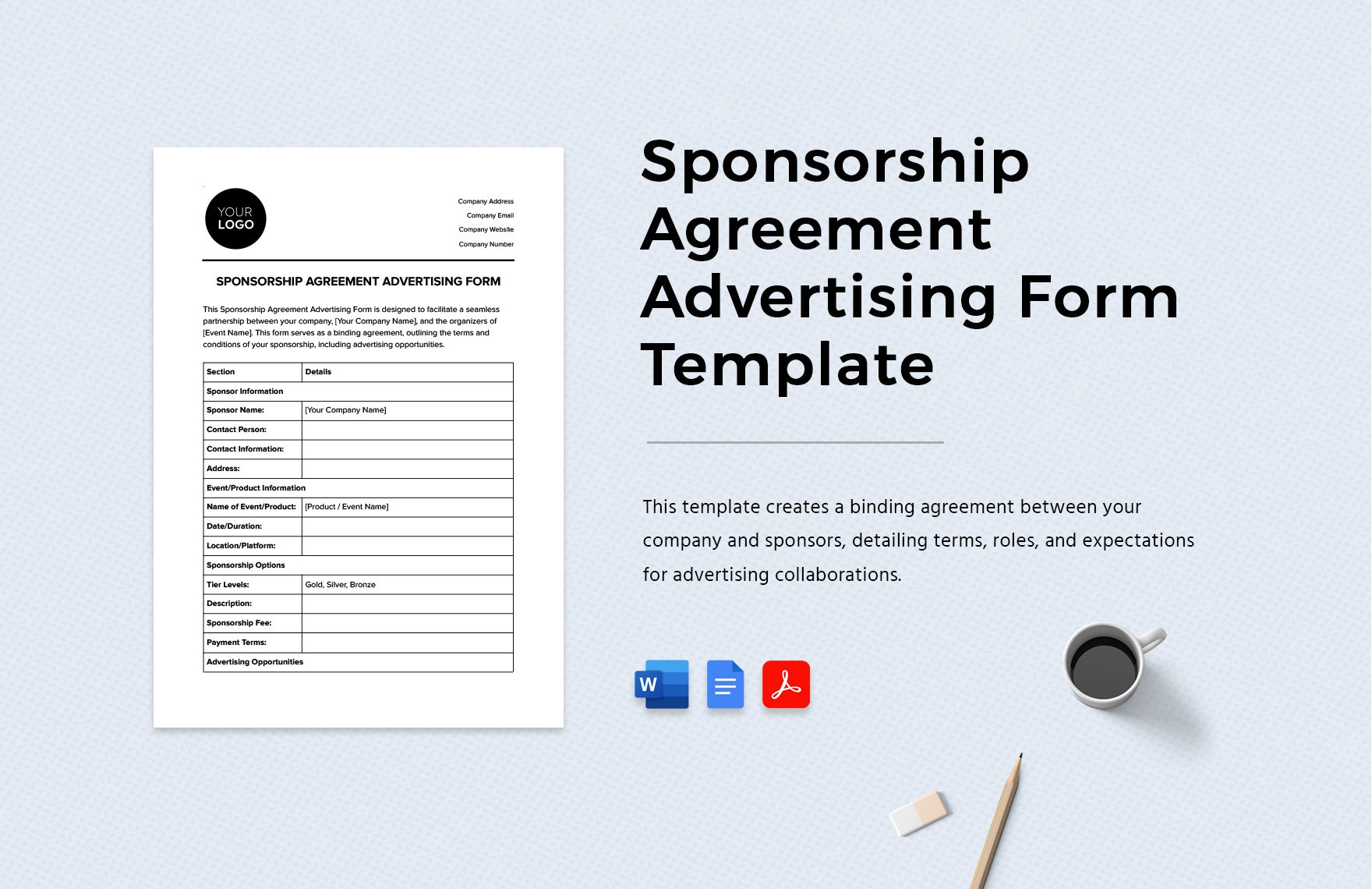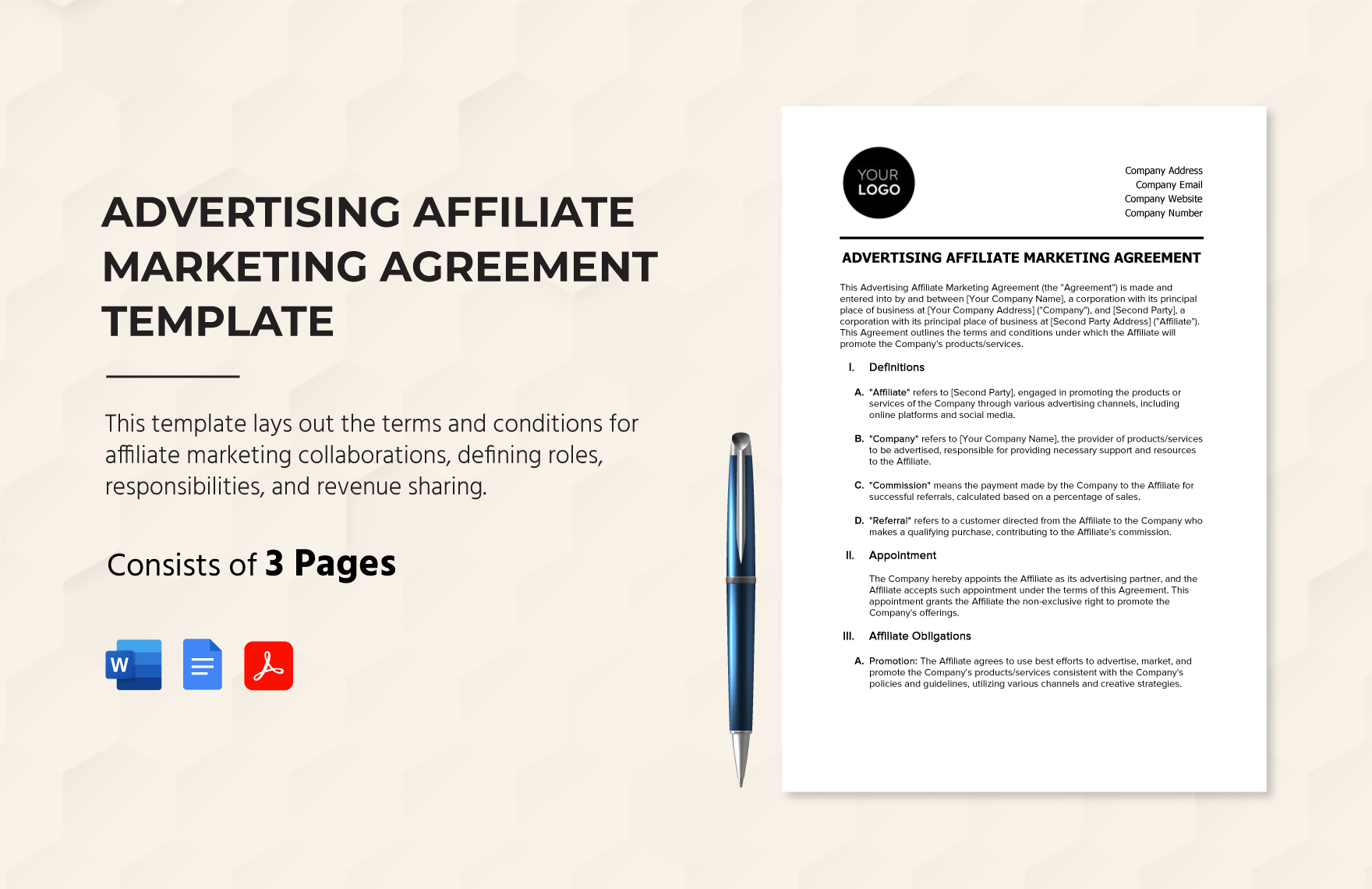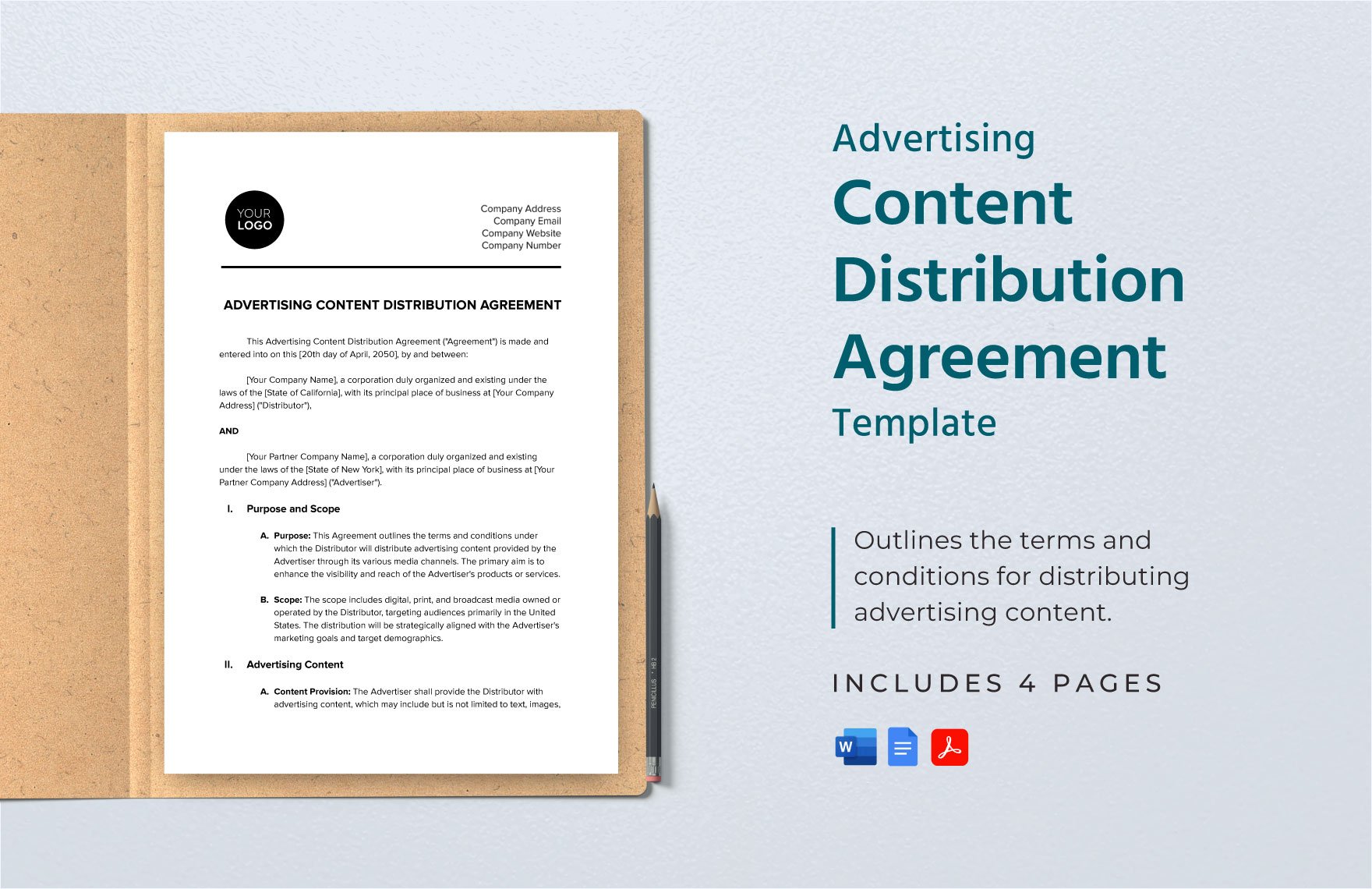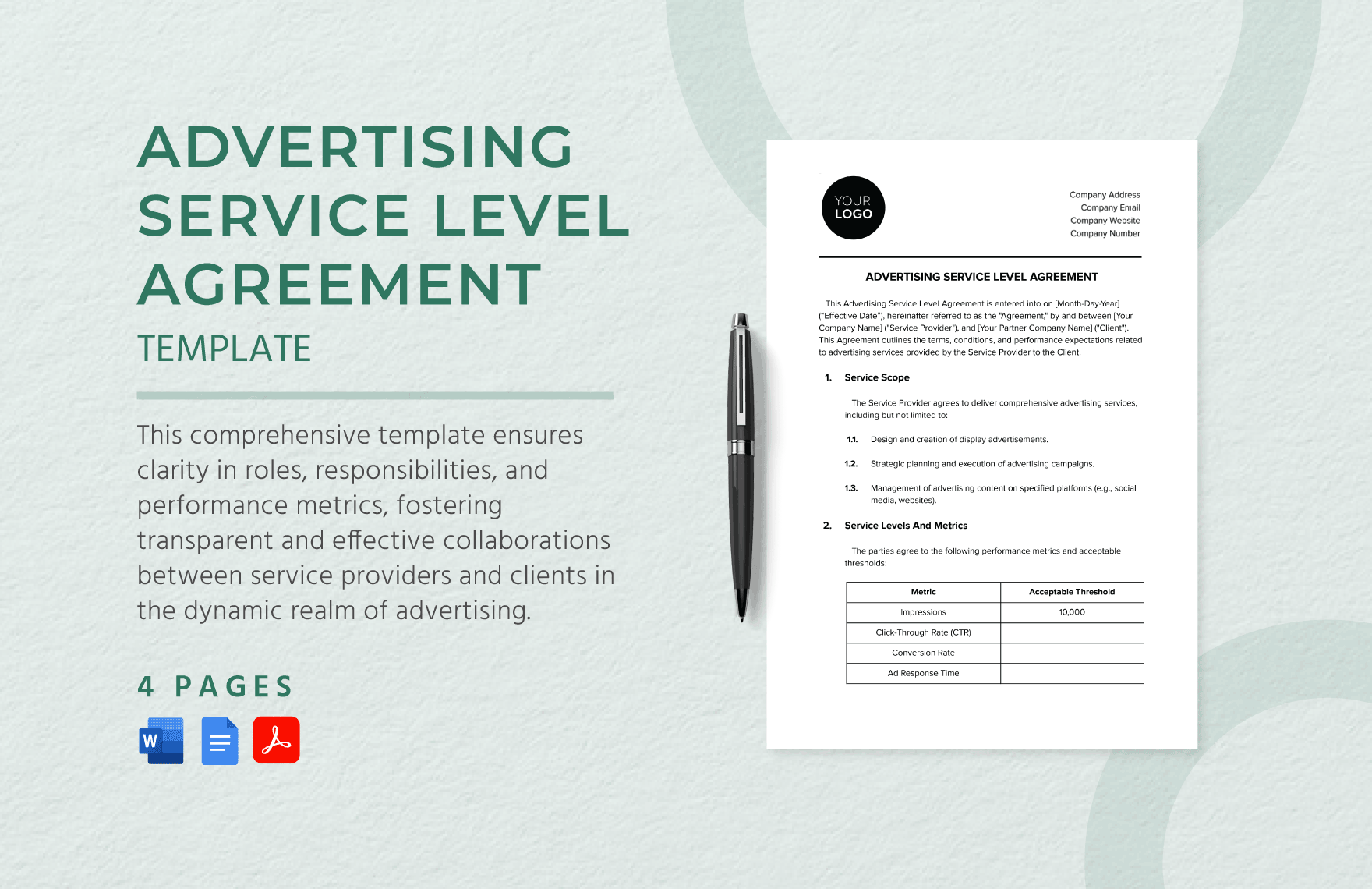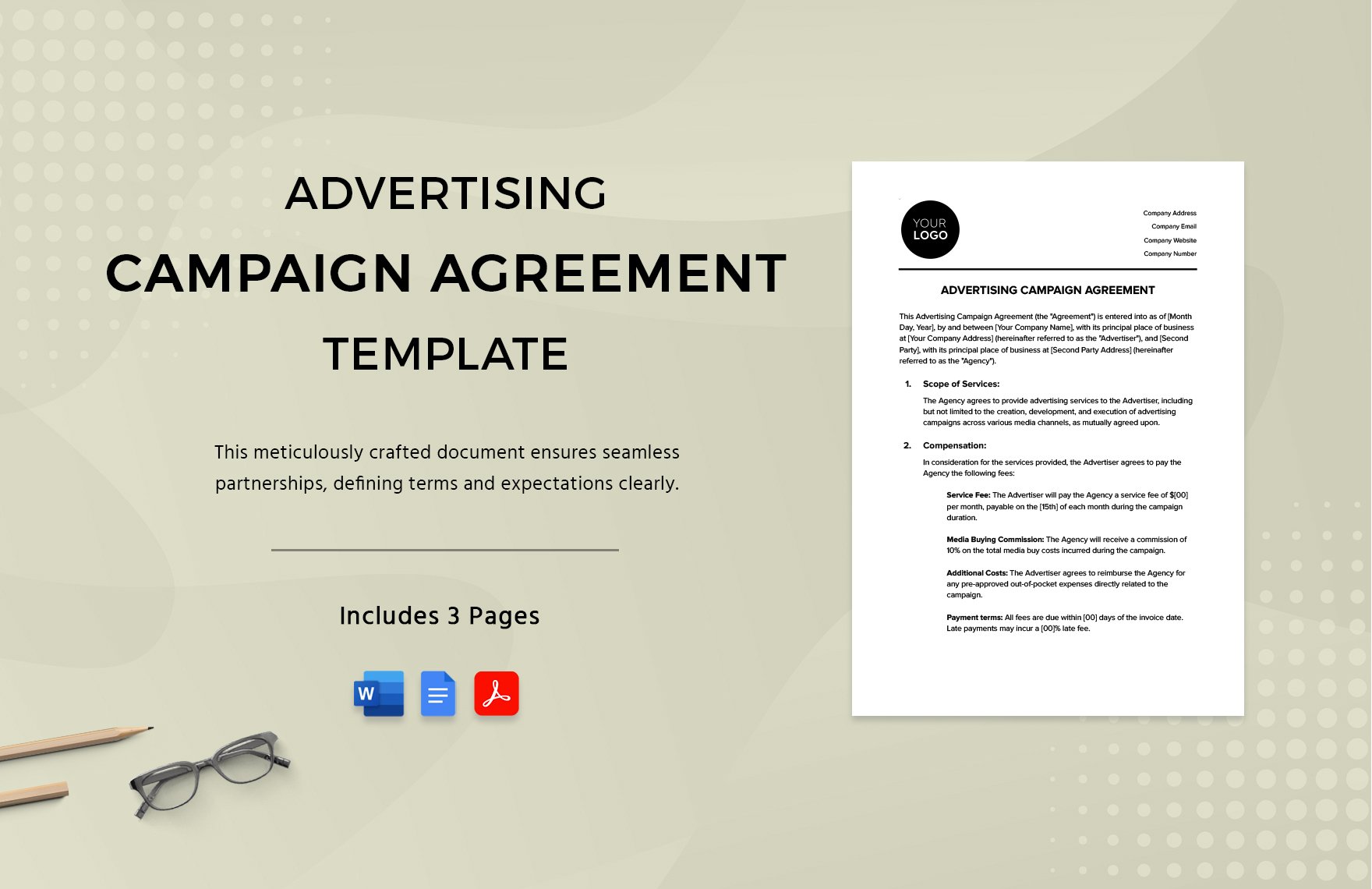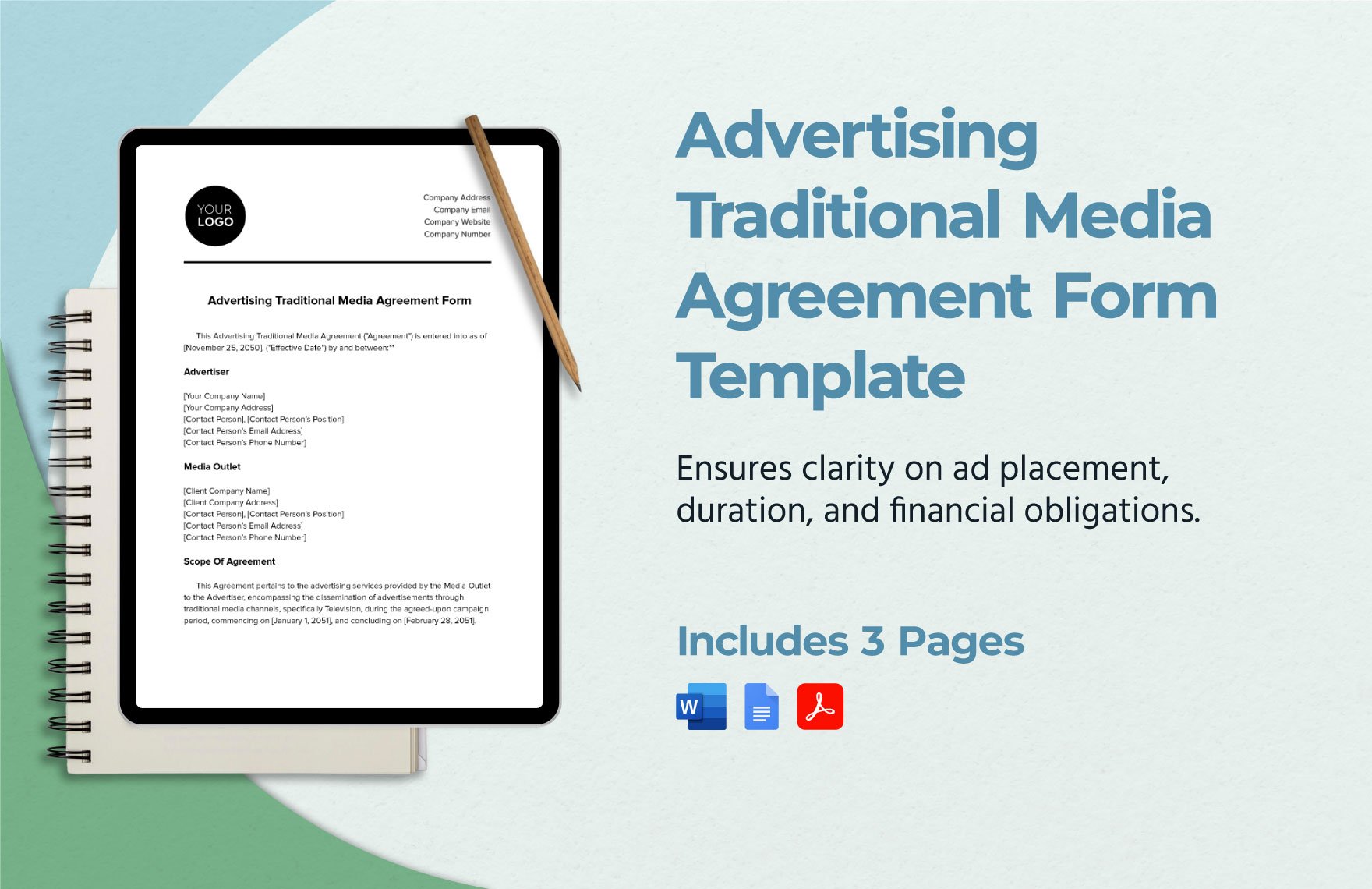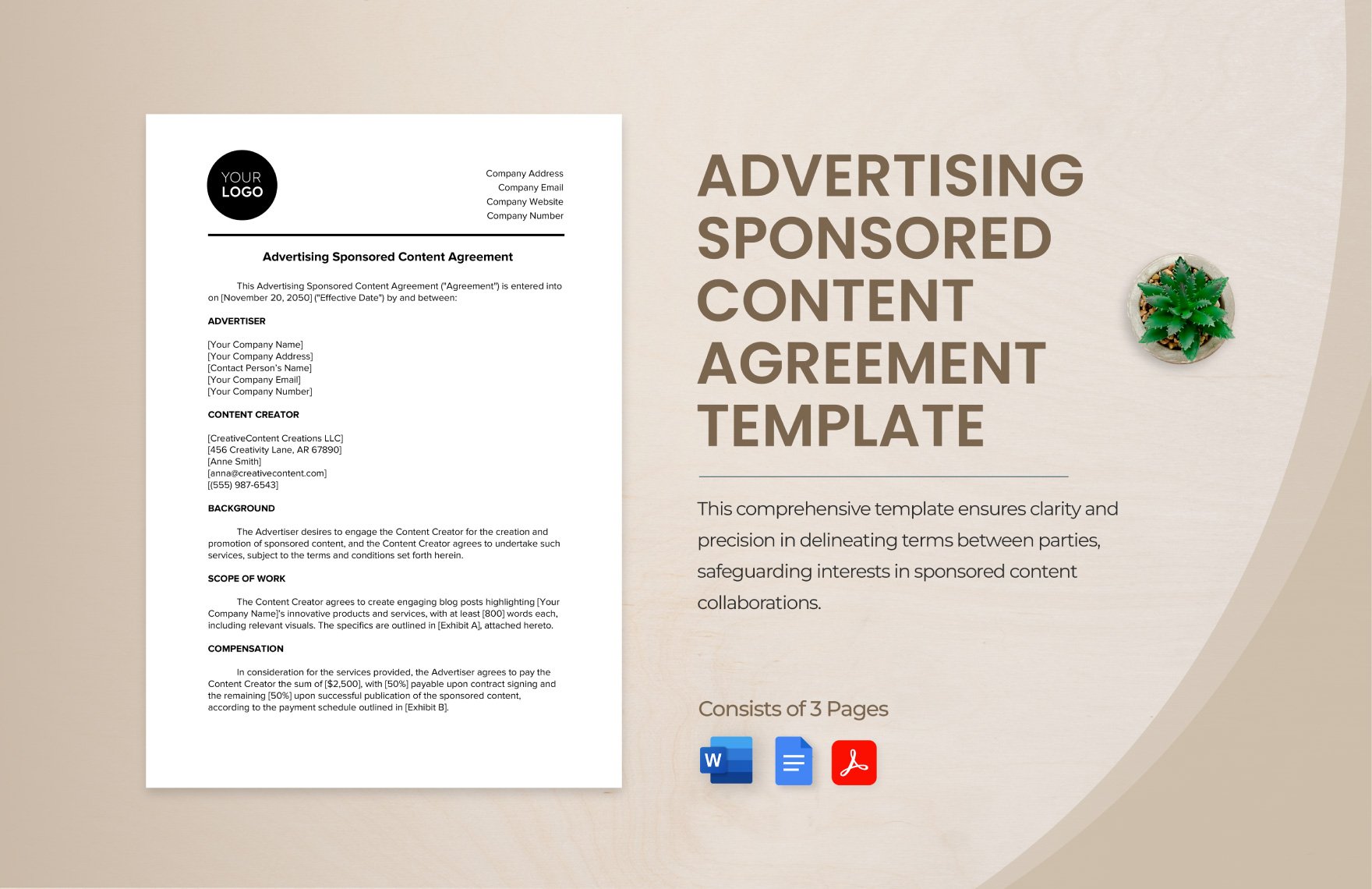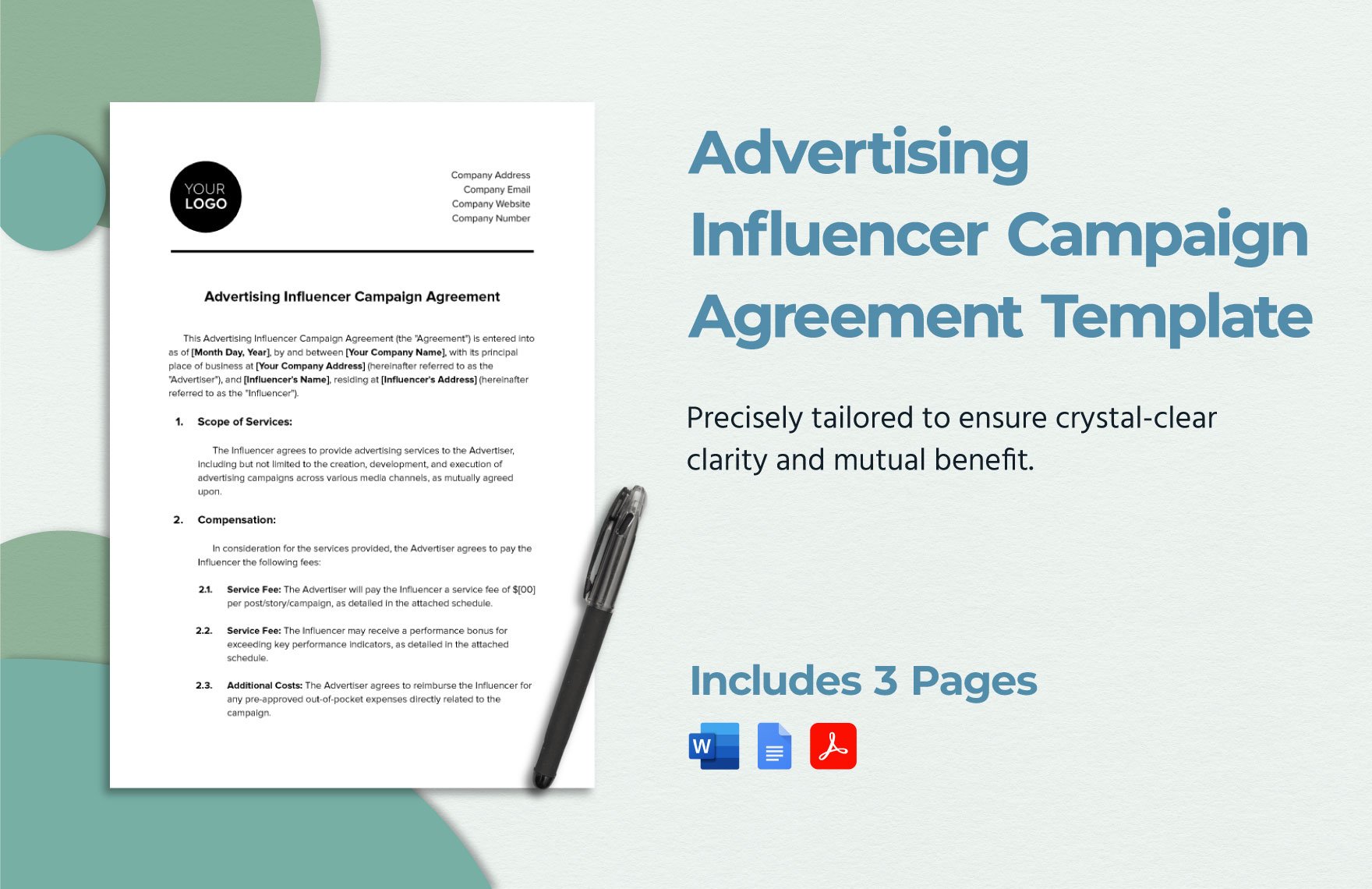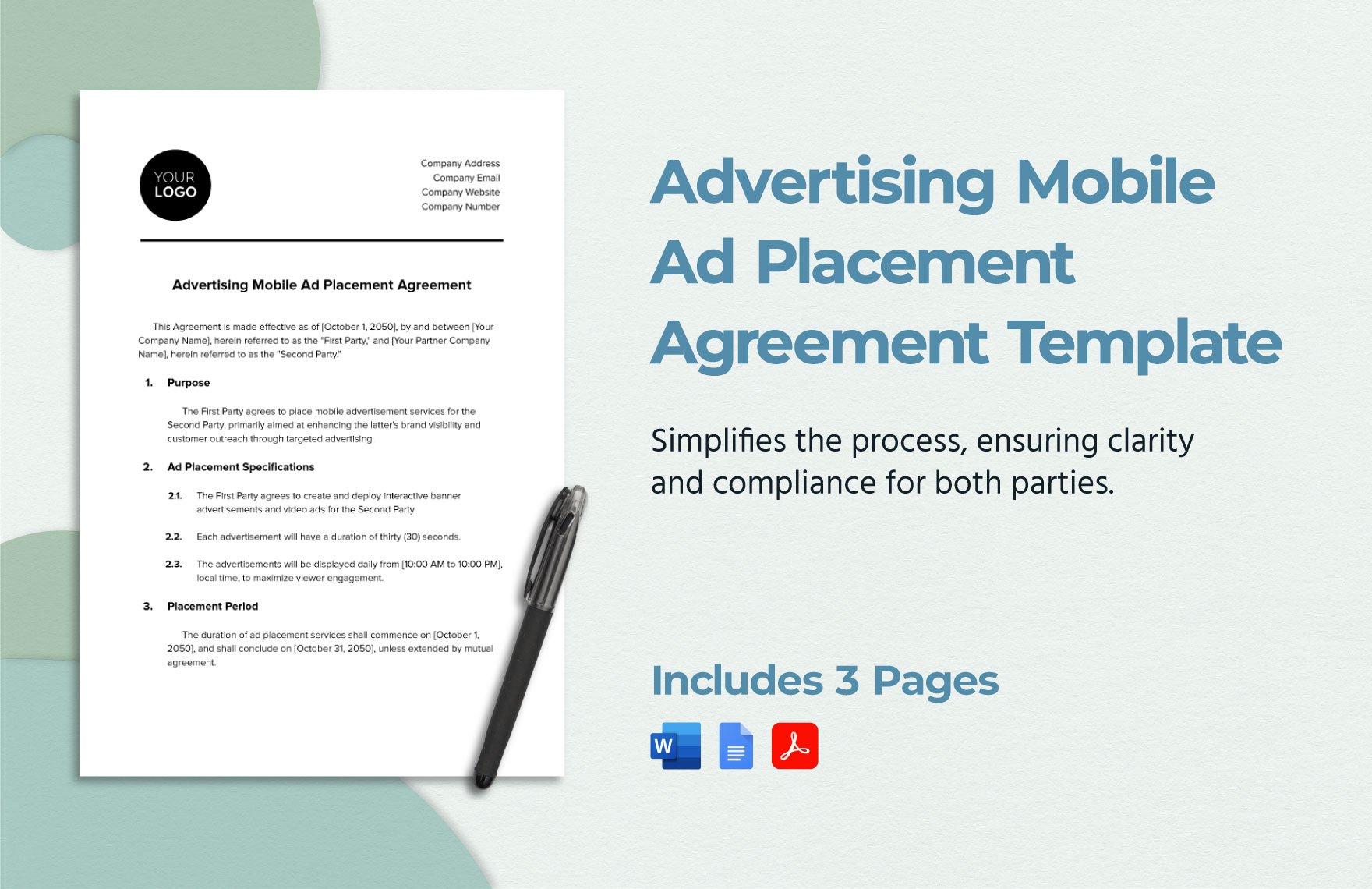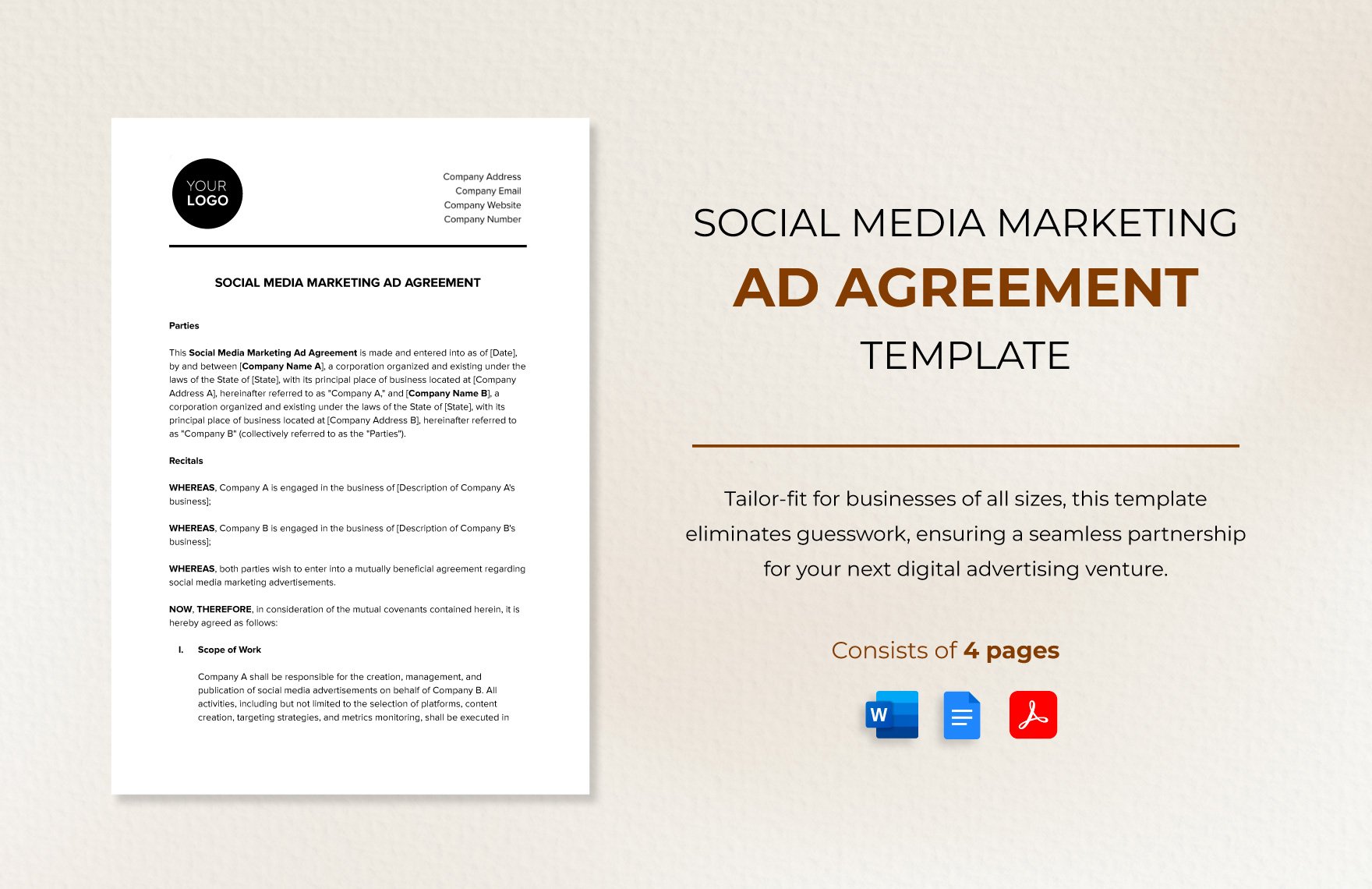Make your advertising agreements come to life with Advertising Agreement Templates from Template.net.
Keep your business dealings professional, your transactions seamless, and your record-keeping meticulous with our Advertising Agreement Templates from Template.net. Designed for business owners, marketers, and legal professionals, these templates help you streamline agreements, manage collaboration terms, and ensure clear communication. Whether you're promoting a new campaign or setting up a sponsorship event, our templates provide detailed sections to outline terms, conditions, and deliverables. They also include essential fields like dates, contact information, and promotional codes. With no legal expertise required, Template.net's professional-grade design makes it simple to articulate your vision and correspond it effectively with all parties involved. Enjoy the benefits of ready-to-use, customizable layouts perfect for print or digital distribution, saving you time and effort while focusing on the content that matters.
Discover the many Advertising Agreement Templates we have on hand to meet your unique business needs. Start by selecting a base template that suits your industry, and easily swap in your company's logo, specific terms, and key details. Tailor the document to fit your brand by tweaking colors and fonts to match your aesthetic. For advanced touches, drag and drop icons, graphics, or even animate key sections to emphasize crucial information. With Template.net, the possibilities are endless and skill-free, making it a fun experience to create professional agreements. Our library is regularly updated with new designs, ensuring fresh layouts and contemporary styles for every new requirement. When you're finished, download or share your polished advertising agreement effortlessly via email, print, or export for any platform—ideal for multiple channels and easy real-time collaboration.
